Lissus: Illyrians’ Sophisticated Military Base
- Ancient States & Regions

Lissus or Lissos was an ancient city located in the current city of Lezha on the northwestern Albanian coast. From the evidence on-site and classical sources, the city of Lissus must have been a heavily fortified city, serving more as a military base rather than as a civic or agricultural community.

Early Establishment
Lissus occupied a strategic position: its eastern side was protected by another stronghold rising in a higher hill (mount Shëlbuem) known in antiquity as Acrolissus or Acrolissos ; in the south, the Mat River (ancient Mathis or Ardaxan River) delta marked a natural border; through the old bank of the Drin River ( Dreinos or Oriund ), the lowest part of Lissus communicated with the sea at the pier then called Nymphaeum (modern port of Shëngjin).
The earliest events where the name of Lissus appears to relate to the foundation of a Parian-Sicilian colony in the island of Pharos (modern Hvar) and the alliance of 385 B.C.E. between the Illyrian king Bardylis and Dionysius I the Elder, tyrant of Syracuse during 405 B.C.E. – 367 B.C.E. In this context Diodorus writes the following:
“ He [Dionysius I] had already dispatched a colony to the Adriatic not many years previously and had founded the city known as Lissus ” (Diodorus, XV, 13).
This passage has encouraged scholars to date the foundation of Lissus in the early IV century B.C.E. This is also the period when the first coins are struck (or brought) in Lissus bearing patterns very similar to the coins struck in Syracuse during the same time. There seems to have been a significant Sicilian influence in Lissus during the time of Dionysius and Bardylis. However, this influence must be assessed in the context of the Illyrian-Sicilian alliance and Dionysius’ increased focus on cross-Adriatic affairs rather than as Lissus’ original foundation.
There was already an Illyrian town over the hill of Lissus since the sixth century B.C.E., apparently from founders who descended from Acrolissus. The walls of this town covered a surface of about 2.30 ha, a surface that in the IV century developed into the acropolis of Lissus, a smaller surface of 1.80 ha, but was incorporated over the much larger and newly developed upper city section.

The Military Nature of Lissus
The Sicilian-Illyrian influence was the first to turn Lissus into a settlement with urban character and strong defences. This development seems to have happened fast, out of a warfare necessity. In fact, Bace (2018) puts out an interesting argument suggesting that it was in Lissus where a 2,000 strong Sicilian regiment disembarked. These troops were placed under the command of the local ruler Bardylis who launched an incursion south against Epirus and Delphi.
A year later, in 384 Dionysius intervened in the northern island colony of Pharos to support them against some neighboring Illyrian tribes. Again, the city is mentioned as a base from which “ the governor of Lissus appointed by Dionysius sailed with a good number of triremes ” (Diodorus, XV, 14) to go into the aid of Pharos.
The use of the settlement as a base seems reasonable, especially in the context of the alliance between Bardylis and Dionysius; yet the term “ governor appointed by Dionysius ” has caused problems, encouraging some to push forward the theory of Lissus as a Syracusian colony.
During the IV-III centuries, Lissus developed into a splendid city with very strong defenses. At that time, the surrounding walls, made of stone blocks from nearby quarries, reached an impressive longitude of 2,200 meters (7,218 feet), defending a surface of 20 ha. These walls run from the height of the acropolis all the way into the flat land along the Drin river bank.
The protective/outer walls of Lissus are especially impressive in their width, some 3.20-3.80 meters (10.5-12.5 feet), significantly wider than the standard width of 2-2.50 meters (6.5-8.2 feet) of other regional fortifications. With a height of 8 meters (26.2 feet) and 18 towers rising along, the walls of the settlement must have been unbreakable to foreign invaders.

The settlement inside was organized as follows: the acropolis that we mentioned (1.8 ha), the upper city (12.8 ha), the lower city (9 ha), and the river bank fortification (1.5 ha). Over 12 gates allowed for communication in and out of the city as well as between its internal sections especially between the lower city and its most vital part, the upper city.

Roman Conquest
During 250-231, Lissus and its surrounding was conquered by the Illyrian state of the Ardiaei led by king Agron. With the Ardiaean invasion Lissus seems to have lost whatever sort of autonomy it previously enjoyed and was fully incorporated within the expanding Ardiaean kingdom. The Ardiaeans continued their expansion south threatening Hellenic colonies, intercepting the Italian/Greek trade along the Ionian Strait, and eventually leading to a Roman intervention against them in what is known as the First Illyrian War (229-228).
After the Roman victory over the Ardiaeans, their queen Teuta was forced to sign an unfavorable treaty. This treaty legitimized the establishment of a sort of Roman protectorate in the coastal belt south of Lissus (the later remained under Ardiaean control). Also, the Ardiaeans had to not sail south of Lissus with more than two ships, even those unarmed. The treaty was followed by Teuta’s retreat from throne, with Demetrius of Pharos rising to regency position on behalf of Agron’s son, Pinnes, but apparently sharing or dividing the rule with Scerdilaidas, an Illyrian general with potential royal ancestry.
Lissus a Buffer Port Between Rome and Macedon
In the decade that followed, Rome showed a lack of interest in the eastern Adriatic, at least as perceived by native Illyrians. Around 220 Demetrius of Pharos and Scerdilaidas sailed south of Lissus with a combined force of 90 ships (Polyb. XVI, 3: XVI, 6), assaulting southern Greek polities of Pylos and across the Cyclades. The sail south of Lissus would provide the “ casus belli ” for the Second Illyrian War of 219 with Romans again victorious.
Roman expansion east of the Adriatic brought them into conflict with the Macedonian kingdom. In 213 Philip V, king of Macedon, launched an incursion against Lissus. Polybius uses the event to describe the strength of both Lissus and nearby Acrolissus:
“ Observing that the defences of Lissus, both natural and artificial, were admirable from land as well as sea, and that Acrolissus which was close to it owing to its height and its general strength looked as if there would be no hope of taking it by storm, he entirely renounced this latter hope, but did not quite despair of taking the town. Noticing that the ground between Lissus and the foot of Acrolissus was convenient for directing an attack from it on the town he decided to open hostilities on this side, and employ a stratagem suitable to the circumstances ”. (Polyb. VIII, 3-4).
Through a stratagem based on diversion Philip captured both Acrolissus and Lissus. With the capture of the city, Philip secured an important access into the Adriatic Sea. Yet, contrary to some opinions, the city could not serve as an effective bridgehead into Italy (so that Philip could materialize a supposed plan of taking the war against the Romans in Italian peninsula) while the more convenient and southern ports of Dyrrachium and Apollonia were held by the Romans. The conquest of Lissus seems to have instead served Philip to insert a gap between the Romans and the Ardiaei (now Roman allies), in an effort to detach the latter from their pro-Roman position.

Philip’s possession of Lissus was short; not only he failed to gain the support of the Ardiaeans but rendered them hostile with his direct intervention. In 308 the Ardiaean ruler Scerdilaidas (now risen into sole kingship) along with his son Pleuratus launched an incursion against the Macedonian garrison of Lissus. The Ardiaean-led troops recaptured Lissus, Acrolissus and surrounding territory. Ardiaean possession of Lissus was ratified three years later at the peace treaty of Phoenike between the Romans and the Macedonians.
Lissus continued to be an important settlement for the Adriaean state during the rule of Gentius (180-168). It was here where Gentius, in 170 first welcomed the Macedonians envoys of the Macedonian king Perseus, inviting the Illyrian to abandon the pro-Roman approach of his father Pleuratus and join the war against the Republic. When Gentius joined the war against the Romans, he turned Lissus into his operational centre, gathering 15,000 troops here, and dispatching them accordingly. By 168 the Romans had defeated Gentius, formally destroying all the Ardiaean state and monarchy and including all their lands into the Roman possessions.
Lissus’ Role During the Civil War Between Pompey and Caesar
To administer the newly conquered lands of the Ardiaeans, the Romans initially divided them into three separate districts or territories. One of these territories stretched from the lands near Scodra north into the Mati River south, with Lissus as its administrative center. Later, after 146 Lissus became the most southern possession of the Roman province of Dalmatia.
Lissus reappears in the events related to the civil wars of Caesar against Pompey. In pursuit of his enemy, Pompey, Caesar crossed the Adriatic and encamped in current Central Albania but still with small contingents. For this, he asked Marc Antony to cross the sea with additional units. From Brundisium, Antony began the sail towards the outlet of the Seman (Apsus) River where Caesar had set his camp but southern winds and the patrols of the hostile Rhodian fleet pushed him north into the harbour of Lissus, Nymhpaeum.
The city itself was controlled by a Pompeian garrison but when the citizens witnessed the stationing of the large Caesarian navy at Nymphaeum they forced the Pompeian garrison and commander out from the city and opened their gates to Marc Antony.

During the ensuing battles between Pompey and Caesar around Dyrrachium, Lissus provided essential supplies for Caesar troops. Also, Caesar sent 30 pontoon -s (Gallic ships with flat base) in the river bank of Lissus where they stood as convenient transportation in case Pompey decided to jump back in Italy (these pontoons were however all burned by Pompey’s son – Polyb. II. XXVIII).
After the war against Pompey was transferred south, Caesar placed a cohort in Lissus to maintain it under his possession. This cohort seems to have marked the establishment of a community of Roman colons in Lissus.
Political and Administrative Organization During Roman Rule
The Roman colons settling in Lissus were mainly merchants seeking to profit from its strategic position along the coastal road from Salona to Dyrrachium and also into the rich mining lands of Dardania and Moesia. The Roman colons formed a community known as “ conventus civium Romanorum ” (“Council of Roman Citizens”). During Caesar’s time the walls, gates, and towers of Lissus had been reconstructed (this is especially supported by epigraphic evidence of the tabula ansata model on the stone blocks, dated to the civil war period).

The conventus also conducted fortification works across the city during the I century C.E. Roughly during the same period, Lissus was officially recognized as “ oppidum civium Romanorum ”, (“City of Roman Citizens”), apparently during the reign of Octavian (as mentioned by Pliny, NH. II. 22). This status seems to show that all the inhabitants, no matter their background, were granted Roman citizenship; a well-deserved status for a city that had actively supported Caesar. It also reflects a strong Latin influence in Lissus; the city seems to have been among the first urban areas to have been Romanized in the region.
During Roman Imperial rule, Lissus was governed by a number of hierarchical institutions. The highest governing power was held by the ordo decuriorum , a city council dealing with most important matters of the community. The executive power was held by the diumviri quinquenalis , a council of two magistrates. The edili/aedil dealt with public constructions, city supplies, and other public works while a questor managed the treasury. Since the first quarter of the first century B.C.E., Lissus had earned the status of municipium (a city of second rank) and later the status of colonia (the highest urban rank), apparently during Octavian’s rule. During the early imperial period, the citizens formed two social classes, the “ negotiatores ” and “ mercatores ”, while various inscriptions refer to imperial and municipal properties within the city.
Late Antiquity and Decline
Lissus appears in the “ Tabula Peutingeriana ”, Lissus’ geo-strategic position is confirmed, the coastal road from Salona to Dyrrachium not only went right through Lissus but the city itself marked the beginning of the road Lissus-Naissus-Ratiaria which linked the Adriatic with the Danubian frontier. During the rule of Diocletian (284-304) the city was included in the province of Praevalitana. List of Hierocles confirms the city as one of the three most important cities of Praevalitana. During IV-V-th centuries the city retracts on the surface, concentrating into the upper parts while abandoning the lower riverside part. This was apparently caused by the Drin River branch of Lissus turning idle as most of its volume supplied the other branch connected with the northern Buna River. This separated Lissus from Nymphaeum as well, preventing it from the direct, lucrative, and prosperous connection to the harbour and the sea.
Lissus gradually fell in importance when it fell under Byzantine sphere of control and included within the Theme of Dyrrachion . Yet, during VII-VIII centuries it is mentioned by Anonymous of Ravenna as an important coastal city, along with Dyrrachium and Aulona. In 592 the Slavs who had already ravaged Illyrian lands, conquered Lissus and destroyed it almost all.
Bibliography
Anonymous of Ravenna. Cosmography .
Brunga, L. (2017). Fortified System of Lissus: “The City of 12 Gates” . Editions Universitaires Europeennes EUE.
Diodorus Siculus. Bibliotheca Historica. XV .
Dzino, D. (2010) Illyricum in Roman Politics . Columbia University Press.
Malaj, E. (2017) Lezha gjatë periudhës së Antikitetit (Lissus during the period of the Antiquity), Studime Historike III-IV . Akademia e Studimeve Albanologjike, Instituti Historisë.
Përzhita, L. (2007). Fortifikime të shek. IV-VI në luginën e Drinit (Via Lissus-Naissus)/Les forteresses de la basse antiquite sur le bassin de Drin (Via Lissus-Naissus). Iliria, XXXIII .
Pliny. Naturalis Historia. II .
Tsetskhladze, G.R. (2008). Greek Colonisation. An Account of Greek Colonies and Other Settlements Overseas . Vol. II. Leiden, Boston.
Related Posts:

4 thoughts on “ Lissus: Illyrians’ Sophisticated Military Base ”
Hey there! This is kind of off topic but I need some guidance from an established blog. Is it difficult to set up your own blog? I’m not very techincal but I can figure things out pretty quick. I’m thinking about creating my own but I’m not sure where to start. Do you have any tips or suggestions? Thank you.
Hello. You can start your blog with using WordPress. Kind Regards.
Lezha is a beautiful city! You should visit Lezha. Great article!
Absolutely, Lezha is one of the most beautiful cities in Albania! Great job guys!
Leave a Reply Cancel reply
Your email address will not be published. Required fields are marked *
- Ancient States & Regions (21)
- Battles and Campaigns (8)
- Biographies (36)
- Recent News (3)
- Travel (40)
Most popular articles

Carolyn Perry
Search this blog, a visit to lissus, a walled illyrian city.
For many the city of Lezhë is mainly associated with the Albanian national hero, Gjergj Kastrioti, known as Skanderbeg, who famously formed the League of Lezhë in the city in 1444, an alliance of lords who came together to rise up against the Ottoman occupation and which led to twenty five years of bloody resistance to the occupying forces and the armies sent by, and often led by, the Sultan. It was also the place where Skanderbeg was laid to rest following his death in 1478, and where a monument to him now stands at the ruined Cathedral of St Nicholas.

The key to understanding the ancient city is its strategic location. It lies on the bank of the river Drin which was navigable in ancient times, and is just 3 kilometres from the Adriatic today. The city sits on a limestone spur, an excellent defensive position with 360 degree views enabling sight of all approaches to the city. The hill to the east (Mal i Shëlbuemit) was known in ancient times as Acrolissus (high Lissus) and it is here that the earliest remains of habitation have been found, including traces of walls dating to the 8 th century. However, it seems that by the 6 th century the population had moved to the lower hilltop to the west and settled there [1] . Not only was the city on a navigable river and therefore accessible from the Adriatic but it was on several important land routes, including into Kosovo. We don’t know much about the inhabitants of the city, except that Lissus was in the territory of the Labeatai, an Illyrian tribe whose territory was around Lake Shkoder (then Lake Labeatis). Lissus may have been its most southerly extent.
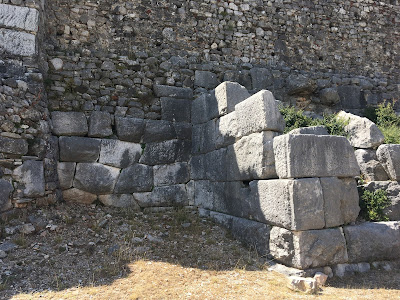
The important strategic position of Lissus meant that it was a target, not only for Rome, but for the Macedonians during their wars with Rome. Lissus is mentioned for the first time in historical sources by Polybius, in the 2nd century BC, in his account of the Illyrian wars and the Macedonian-Roman wars between 246-146 BCE. The harbour was used by the Illyrian Ardiaei tribe as a base of the Illyrian navy in many of the attacks against coastal cities of the Adriatic and beyond which were a provocation to Rome, and eventually perhaps the excuse they needed to cross the Adriatic.
Polybius tells us that Philip V of Macedon took Lissus and Acrolissus in 213 BCE to secure a route for Macedon to advance down the Adriatic coast. The city was retaken by King Gentius of the Labeatai, and hosted a delegation from Perseus, the last Macedonian king, in order to sign an alliance between them in the face of the threat from Rome. The Romans eventually defeated Gentius, himself the last of the Illyrian kings, and occupied southern Illyria. The Labeates were taxed by Rome and Lissus, because of its important strategic position, continued to flourish as it became an important naval base and military and administrative centre. The city grew again during the Roman period, and was granted the status of municipium by Julius Casear - it had been loyal to Caesar during the civil war against Pompey, and Marc Antony had landed his forces at Shengjin. Fragments of amphorae from around the Mediterranean conjure up images of goods being unloaded at the quay of the river Drin, and inscriptions tell us about the administrative roles of some of the occupants of the city. Excavations by a joint Albanian-Austrian team in the lower city have revealed that the city expanded beyond the walls during this period. The remains of an atrium-style Roman residence with a small bath can be seen by the main gate, and later occupants had taken advantage of the water supply and ready building materials to convert the building into a church.
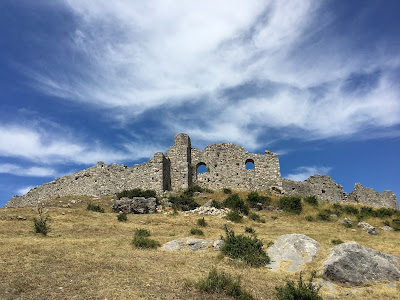
In medieval times the city passed variously from the Dukagjin family, to Serbia, and to Venice, under whose patronage Skanderbeg hosted the meeting of local lords that culminated in the League of Lezhë. It was taken by the Ottomans in 1498 and sacked, but refortified by Sultan Selim I at the beginning of the 16 th century. The fortress on the acropolis was rebuilt, and a mosque built on a high point within the citadel. The mosque’s minaret would have been visible from the valley sending out a powerful message, just as Skanderbeg’s beacon had done for so many years in the previous century. Most of what you see today dates from the Ottoman rebuild, and some later additions, but the enough remains of the Illyrian walls to give a fascinating snapshot of the life of a once important city.
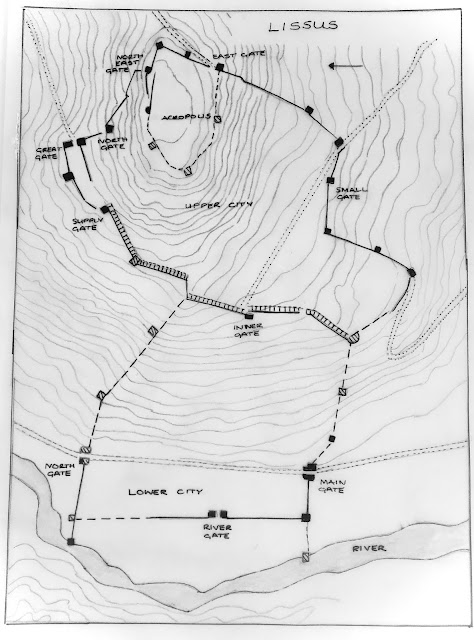
Further Reading
Brunga, Liza, Lissus, the city of 12 gates, Éditions universitaires européennes, 2017
Lehner, Manfred, Lissus Excavation Report 2004, University of Graz 2004
Malaj, Edmond, Lezha Gjatë Periudhës së Antikitetit, Studimi Historike 2017, 3-4, Tirana 2018
Etleva Nallbani, et al., Lezha [Lissos, Alessio] (Albanie), Chronique des activités archéologiques de l’École française de Rome, Balkans, 2016.

[1] There has been some confusion about the origins of the city, since Diodorus Siculus writing in the 1 st century BCE his Library says that Dionysius of Syracuse founded a ‘city named Lissus’ in 385 as part of a strategy to secure Adriatic trade routes, but there was clearly an Illyrian settlement in existence before this date. It is possible that Diodorus was confusing Lissus with the island of Issa, which was indeed founded by Dionysius.
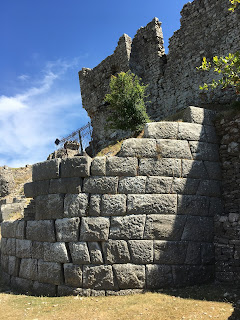
I think this is among the most significant info for me. And i am glad reading your article. But should remark on few general things, The site style is great, the articles is really nice : D. Good job, cheers. Car service from Rome to Ravello

Valuable information. Lucky me I found your website by accident, and I am shocked why this accident didn't happened earlier! I bookmarked it. car service from FCO to Ravello
Post a Comment
Press ESC to close
Or check our popular categories....

Lezha (Lezhë)
In this article, you will learn all about the city of Lezha, how to get there, and its attractions. Additionally, you will receive valuable recommendations and tips.
Most tourists come to know this town while passing through from Tirana to Shkoder. You won’t miss the outlines of the fortress on the hill – that’s Lezha and its main attraction, the medieval Ottoman fortress. But more on that later.

Table of Contents
General facts about Lezha
As with many Albanian cities, the history of Lezha begins in antiquity. It was initially a Greek colony named Lissos, founded by the ruler of Syracuse. Then, it became a Roman camp – Lissus. The Venetians called the city Alessio, while the Serbs and Turks referred to it as Lesh. By the way, Italians still call the city Alessio today.
Evidence of Lezha’s ancient history is primarily seen in the well-preserved cubic stone masonry of the fortress walls.
Like most Albanian cities, throughout the centuries, Lezha has been the subject of conflicts and internal disputes among kingdoms, empires, principalities, and even small clans.
It was in Lezha, in the year 1444, that a meeting of Albanian princes and representatives of noble families, led by Gjergj Kastrioti known as “Skanderbeg,” took place. Skanderbeg persuaded them to form an alliance against the Ottomans and led the resistance. This alliance is known in history as the League of Lezha.
Today, Lezha represents a typical Albanian town with a population of around 18,000 people. The city is located on the Drin River, which flows into the Drin Gulf (Adriatic Sea) nearby. However, reaching the shore from Lezha is not very convenient, so it cannot be said that Lezha is on the sea.

How to get to Lezha
The main highway connecting Tirana and Shkoder passes through the city, making it easily accessible by both car and bus.
Buses depart approximately every hour from 4 AM from the terminal in the northwest of Tirana (directions to Durres, Shkoder, the airport, coordinates 41.34434, 19.77683). Ticket prices start from 250 leks. Buses and minibusses travel to both Shkoder and the cities in between Shkoder and Tirana, with all of them making a stop in Lezha.
Useful tip: Even if you board a bus from Tirana to Shkoder or vice versa, ask the driver to stop in Lezha. That’s what everyone does. For detailed schedules, where to check, and prices, you can refer to the article on public transportation in Albania.
Whether you take a bus from Tirana or drive by car, the travel time will be almost the same – just over an hour (55 km from Tirana to Lezha).
- On the following link, you can find a comprehensive overview of the city of Shkoder .
- If you love visiting very small towns and enjoying their atmosphere where there are no tourists, then on your way from Tirana, besides Lezha, there’s another town where you can spend 2-3 hours – Kruja .

Where to stay in Lezha
In reality, very few tourists stay overnight in Lezha, as it is mainly a “transit” city. But if you do happen to miss the last bus or your car suddenly breaks down, I can recommend excellent options.
All accommodations are in the city center, within walking distance of the main attractions:
- Jolly Hotel – a good 4-star hotel located at the foot of the fortress hill. The highlights include breakfast on the luxurious terrace on the 13th floor. Rates start from 49 euros.
- Cappuccino Apartment – a convenient option for renting apartments, especially if you are traveling with a child or prefer having breakfast “at home.” Prices from 33 euros per night.
- Hotel Liss – another “hotel” option with excellent guest reviews. Rates start from 60 euros.

Attractions in Lezha
Lezha doesn’t have many attractions to draw tourists here. Let me tell you about all of them – both two.
- Lezha Fortress
- Skanderbeg Memorial.
Lezha Castle
Lezha Castle is primarily intriguing because its walls were constructed and reconstructed based on ancient (Greek) period walls. This is evident from the masonry: large cubic stones belong to the ancient Greek era, almost two millennia ago. The higher, uneven (chaotic and primitive) masonry is from the Ottoman period.
Remnants of Greek walls can be found throughout the city on the left bank of the Drin River. The area where the fortress stands today was once called the Acropolis during ancient Greece.

Interesting to note: Remarkably, there are no remaining structures or even remnants of Byzantine walls within the fortress. Although Lezha was certainly under the rule of the Byzantine Empire, which inherited it from the Venetians, it is possible that both the Venetians and Byzantines considered the state of the ancient walls satisfactory and did not rebuild them.
The fortress sits atop a hill, so you can reach the gates by car or on foot (one road). The ascent is about 150 meters in height, and the distance is almost 2 kilometers from the city’s central square (aptly named after Skanderbeg).
Inside the fortress, there are hardly any intact structures. Small wells, cellars, arches, gates, and the ruins of a mosque with a minaret are what remain. Time (and the Ottomans after Skanderbeg’s death) have not been kind to these sturdy stones.

- Coordinates: 41.78358, 19.65057
- Ticket cost: 300 lek (3 euros)
- Approximate time to plan: about an hour for the ascent to the fortress (if on foot), 30 minutes inside for a leisurely stroll.
My personal rating: 5 out of 10. There is not much whole and interesting left inside the fortress. You can visit it for the opportunity to touch the stones that were shaped by the hands of ancient Greeks, the very ones who built Athens and Delphi three thousand years ago. However, if you are driving from or to Montenegro , Lezha Fortress and Shkodra Fortress are right on your way.
Skanderbeg Memorial
The national hero of Albania, Georg Kastrioti, known as “Skanderbeg,” instilled terror in the Ottoman Empire for almost 30 years. He won numerous battles against the Turks but tragically succumbed to malaria from a mosquito bite in 1478.
Legend has it that his final refuge was found here in Lezha. Despite Skanderbeg’s conversion between Christianity and Islam, the Christians decided to bury him in Lezha at the Church of St. Nicholas.
Interestingly: There’s a legend that the Ottomans feared and respected Skanderbeg so much that after his death, they framed his remains in gold and crafted them into amulets.
Today, only the walls remain of the Church of St. Nicholas. Surprisingly, the Albanians did something quite uncharacteristic by not demolishing or reconstructing it; instead, they covered the church’s ruins with an ancient-style canopy, evoking a touch of the Soviet era.

Inside the church stands the memorial – Skanderbeg’s tomb. The walls display coats of arms, representing battles and other legendary exploits of the renowned commander.
- Coordinates: 41.78269, 19.64325
- Ticket cost: We entered for free. However, we were informed that sometimes there might be a ticket seller near the entrance who asks for a symbolic, yet varying amount (100-300 leks, 1-3 euros). But he will be your personal guide.
- Time to allocate: 5 minutes, as there’s only one room to explore.
Personal rating: 3 out of 10. It’s interesting to briefly visit the interior if you can enter for free.

Tips and recommendations for tourists
Most tourists don’t linger in Lezha for more than a couple of hours, and we also advise the same.
If you’re traveling by car, it’s straightforward to drive to the fortress’s entrance and spend about an hour for a stroll.
If you’re taking the bus to or from Shkoder and Tirana, ask the driver to stop in Lezha. After your visit, you can easily catch the next bus since the “Tirana-Shkoder” highway is quite busy, and public transportation runs from early morning to late evening.
Moreover, just 4 km away from Lezha, you’ll find the beautiful Shengjin Beach, which ranks among Albania’s top 10 beaches .
In conclusion, even though Lezha is not a well-known or popular tourist city, it’s worth stopping by for an hour or two. However, there’s no need to make a specific trip here.
Resources to help you plan your dream trip to Albania
- Flights at the best prices with best discounts
- DiscoverCars – a major international resource
- LocalRent – the leader in the Albanian car rental market. Very low deposits, even in cash.
- Hotellook – compares prices among dozens of platforms and offer you the best one.
- Booking – large online booking platform.
- Agoda – even more accommodation options in Albania.
- GetYourGuide – more than 550 tours
- Viator – 920+ excursions and activities throughout the country
- Comprehensive travel insurance : EKTA
- Airalo eSIM in Albania from $4.5
- DRIMSIM – universal SIM card (or eSIM) in any country in the world.
- Taxi and airport transfer : Intui.Travel
Share Article:
Leave a Reply Cancel reply
Save my name, email, and website in this browser for the next time I comment.
- 1.2 By train
- 2 Get around
- 9 Stay safe
Lezhë is a small city in Albania and part of the historic Mirdita region. Development has brought seaside hotels and countryside guesthouses.
Get in [ edit ]

Lezhë is about 8 km from the excellent beach of Shëngjin (St. John), about 30 km south of Shkodra, and 50 km north of Tirana. With the newer construction of the SH1 motorway that goes aside this city, it is nicely connected with major cities.
By bus [ edit ]
- 41.78024 19.64065 1 Lezhë bus station ( just across the bridge to the centre, on the main north-south road ). Most buses and vans (furgons) arrive and depart from this little square. There are signs indicating where to wait for which destination. Furgons to Rrëshen and Laç leave from the center of town. ( updated Jul 2021 )
- From Tirana one can catch a bus from the National Bus Station (Northern and Southern Bus Terminal.) It departs every hour on the hour during the day and costs 250 lek.
- From Durrës , there are two direct buses per day to Lezhë from the main bus station.
- From Shkodra , it's easiest to take a furgon from Sheshi Demokracia headed for Tirana.
- From cities in the south either change in Tirana or catch a bus/furgon to Shkodra and ask the driver if he can stop in Lezhë.
- If you are coming from the Northeast, you may have to get off in Milot and transfer to another vehicle.
By train [ edit ]
- 41.78056 19.63879 2 Lezhë train station , Rruga e Stacionit ( from the centre cross the bridge and main road and walk past the bus station ). ( updated Jul 2021 )
There is one daily train that runs from Shkodra to Durrës and back that stops here, however the timetable is unknown, and service is intermittent because of the national rail company's continuous financial trouble.
Get around [ edit ]
The entire city of Lezhë is quite walkable.
To get to villages or to the beach at Shëngin, take a group van from the parking lot just past the bridge in the center of town.
See [ edit ]
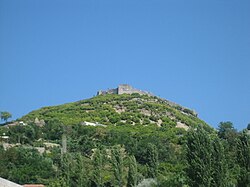
- 41.7823 19.6426 3 Ruins of Lissos . Remains of the old city of Lissus which has been ruled by many empires. There are a couple information panels in English around. As elsewhere in Albania, not much effort is put into preservation, and as such you can walk around the site freely unhindered by fences, or rules. Free . ( updated Jul 2021 )
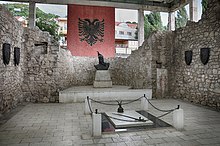
- 41.701432 19.585318 4 Tale ( take the bus from Lezham about 10 km ). Tale is located in Lezha disctrict. Most of the beautiful beach is public. The sea waters are clean and there are numerous bars and restaurants with favorable prices and fresh food. The coastline is about 7 km with untouched areas. It is an ideal place for family gatherings. In Tale, you can also see big bunkers that were constructed during the communist time in Albania. Runners can enjoy the view while running on the paved roads or along the coastline. ( updated Jul 2021 )
- 41.78219 19.64266 5 Muzeu etnografik ( ethnographic museum ), Sheshi Gjergj Kastrioti, Lezhë 4501 ( Pallati i Kulturës Ded Ndue Lazri ). The ethnographic museum of Lezha will present the culture of this old city through traditions, but inside it you will also get to know its peculiarities. The Ethnographic Museum of Lezha has inside a great variety of cultural values, costume design, handicrafts and handmade dishes. If you have been thinking of visiting this city then be prepared to see many of its traditions and to seek much more to know. ( updated May 2023 )
- 41.882218 19.663087 6 House of At Gjergj Fishta (1871-1940) . Cultural monument of first category. He is a famous poet in Albania. ( updated May 2023 )
- 41.785919 19.639388 7 Kisha Zoja Nunciata . 800-year-old Franciscan Church on the hill overlooking town. ( updated May 2023 )
- 41.777891 19.648026 8 Katedralja e Shen Nikollit . Newly built modern cathedral in the town's center. ( updated May 2023 )
- 41.810314 19.596674 9 Shengjin beach . Shëngjin Beach and surrounding wetlands reserve and birdwatching area of Kune-Vain-Tale. ( updated May 2023 )
Do [ edit ]
- Take part in the annual Emigrant Day in mid-August in Lezhë!
- Kayak along the Fan River
- Visit Kthelle Regional Nature Park off the A1 Motorway
- Visit the Gurra Domgjon natural water source
- Refresh yourself with the cold and pure water of the Mirdita highlands
Buy [ edit ]
- Zadrimore textiles weaved with looms
- Ceramic pottery
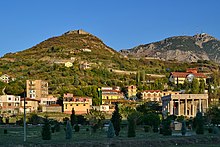
Eat [ edit ]
- Restaurant Rapsodia , Lagjja Sake, Shëngjin ( Follow the road maps to get to Lezha. Then take the road to Shëngjin. Passed 4 km you’ll find the Hotel Restaurant Rapsodia ), ☏ +355 68 294 7771 . Italian-Albanian fusion.
- Mrizi i Zanave , Fishtë Village ( Lezhe-Vau Dejes Road ), ☏ +355 69 210 8032 . Named after the title of an Albanian writer and priest's book, this restaurant features all organic specialties of the Kallmet and Zadrime area.
- Fresh seafood in the seaside village of Shëngjin.
- Trëndafili Mistik ( Te Diella ), Vaini Lagoon, Ishull Lezhë , ☏ +355 68 226 7107 . Traditional local cuisine
- Traditional restaurants in the hamlet of Katund i Vjetër, Rubik
- 41.78083 19.64477 1 Natyra e Qete , Gryke Zeze , ☏ +355 692478331 , [email protected] . 11:00-23:00 . Natyra e qete is a meat restaurant, also in this restaurant you can find various traditional Albanian food. ( updated May 2023 )
- 41.66169 19.67258 2 Arberia Palace , Autostrada Lezhe - Tirane, SH1, Fushe Milot , ☏ +355 682058904 , [email protected] . 08:00-23:00 . ( updated May 2023 )
- 41.775731 19.648697 3 Piceri Marku ( Piceri Marku Italiane ), AL, Rruga Franz Josef Strauß , ☏ +355 68 532 5118 . 07:00-22:00 . Piceri Marku is held as the best place for pizza because they are especially served and people who like them a lot understand that they are very similar to pizza in Italy. ( updated May 2023 )
Drink [ edit ]
- Try local wines from the Kallmet region.
- 41.7802 19.6436 1 Bar Amerika , Bregu i Drinit, Rruga Luigj Gurakuqi . ( updated Jul 2021 )
- 41.7674 19.6408 2 Giardino Della Pace . ( updated Jul 2021 )

- 41.78018 19.64265 3 NOT EXISTING LISTING IMAGE BAR-CELONA , Bregu i Drinit, Rruga Luigj Gurakuqi , ☏ +355 68 338 0871 . 07:00-22:00 . ( updated May 2023 )
- 41.78148 19.64239 4 Eridon Lounge , Lezhë District ( Lgj: SKENDERBEJ, behind the palace of culture ), ☏ +355 68 603 2222 . 07:00-23:00 . Coffee bar that offers a variety of alcoholic and non-alcoholic drinks, an outdoor environment is provided for smokers, and we also offer ice cream with different flavors. ( updated May 2023 )
- 41.78015 19.64537 5 My Bar 2 ( My Bar NR.2 ), Shetitorja Gjergj Fishta , ☏ +355 672088833 . 07:00-23:00 . ( updated May 2023 )
- 41.7642 19.6338 6 Island Bar Pizzeri , ☏ +355 677508277 . 24 hours . Island Bar Pizzeri is the restorant when people drinking and eating. ( updated May 2023 )
Sleep [ edit ]
- 41.753385 19.593598 1 Rambuje Resort , Ishull-Lezhë . Situated in Ishull-Lezhë, 1.5 km from Kune Beach, in Rambuje Resort everyone has the possibility to find everything he needs in one place: bar, restaurant, music activities, play garden, sports environment, a seasonal outdoor swimming pool, free private parking. ( updated Jul 2021 )
- 41.924 19.5418 2 Camping Albania B&B Restaurant , Barbullush village, Bushat , ☏ +355 67 380 7207 , [email protected] . Check-in: 10:00 , check-out: 12:00 . This campsite is run by an Albanian-Dutch family and welcomes all types of campers. It is in Barbullush village in the Bushat municipality, 10 km north of Lezhë. The environment is beautiful, countryside with views over the beautiful mountains. The camping is basic and clean according to western standards. They have a good buffet restaurant and small swimming pool. Free wifi all over the campsite. From €5 p.p. B&B €40 double/€30 single . ( updated Dec 2016 )
- 41.76483 19.75332 3 Hotel Marub , Katund i Vjetër, Rubik , ☏ +355 68 207 7424 . Enjoying a quiet location in a forested valley surrounded by mountains, Hotel Marub provides eco-friendly accommodation in the district of Mirdita. This family-run hotel, offers rooms with wooden furnishings and free Wi-Fi. All rooms are air-conditioned and feature a balcony with mountain views, a seating area, and a private bathroom. Amenities include a minibar and a flat-screen satellite TV. The Hotel Marub’s restaurant features a summer terrace and serves organic food, locally sourced herbs and cheeses. A selection of hot and cold drinks is available, as well as water from mountain springs. Hotel Marub values environmental protection, careful use of water and recycling. Solar panels on the roof and energy-saving insulation are featured. Walking, hiking and trekking opportunities can be found in the vicinity. Front desk can help arrange excursions to various destinations in Northern Albania. The hotel is about 2 km from State Road SH30. The Adriatic Sea and the town of Lezhë are within 30 km from Marub Hotel. Tirana can be reached within 70 km. Free private parking is possible on site. ( updated Jul 2021 )
- 41.78018 19.64438 4 Hotel Liss Lezhe , Rruga Beslidhja City Center , ☏ +355 67 200 9841 . Check-in: 14:00 , check-out: 11:00 . Hotel Liss aims to make your visit as relaxing and enjoyable as possible, which is why so many guests continue to come back year after year. Free wifi is offered to guests, and rooms at Hotel Liss offer air conditioning, a minibar, and a desk. During your stay, take advantage of some of the amenities offered, including a 24 hour front desk, room service, and newspaper. Guests of Hotel Liss are also welcome to enjoy free breakfast, located on site. For travelers arriving by car, free parking is available. ( updated May 2023 )
- 41.77468 19.64331 5 Hotel Ambasadori , Rr.Luigj Gurakuqi (Ura e Cenit) , ☏ +355 68 301 3776 , [email protected] . Hotel Ambasador provides accommodations with a garden, free private parking, a restaurant and a bar. With free WiFi, this 5-star hotel offers room service and a 24-hour front desk. The rooms come with a balcony with mountain views. Guest rooms at the hotel include air conditioning, a flat-screen TV with satellite channels, Game console, and a private bathroom with a bidet, free toiletries and a hairdryer. Each room includes a safety deposit box, while selected rooms contain a terrace and others also offer city views. All rooms will provide guests with a fridge. ( updated May 2023 )
Stay safe [ edit ]
Spitali Rajonal Lezhë, Lezha Regional Hospital provides various medical services, including emergency care, general surgery, internal medicine, pediatrics, obstetrics and gynecology, radiology, laboratory services, and more. They likely offer a range of specialized departments and clinics to cater to different medical needs.
Address : Lagjia Varosh Lezhë
Contact : 127 or 0215 2 2222
Go next [ edit ]
- Shkodra (buses to €1.5 paid on the bus, leaving from the bus station; 42 min, 38.6 km away.)
- Pukë (buses to €2.5 paid on the bus, leaving from the bus station; 1 h 27 min, 74.3 km away.)
- Mirdita (buses to €1.5 paid on the bus, leaving from the bus station; 48 min, 50.3 km away.)
- Theth (buses to €4.5 paid on the bus, leaving from the bus station; 2 h 32 min, 114.5 km away.)
- Ulcinj (buses to €2.5 paid on the bus, leaving from the bus station; 1 h 21 min, 74.6 km away.)
- Kukës (buses to €4.2 paid on the bus, leaving from the bus station; 1 h 28 min, 107.3 km away.
- Pages with broken file links
- Has custom banner
- Has mapframe
- Has map markers
- Eat listing with no coordinates
- Usable cities
- Usable articles
- City articles
- Has Geo parameter
- Coastal Albania
- All destination articles
- Pages with maps
Navigation menu
- Destinations
- Experiences
- Doing Business
- Add to trip
My Favourites

Sign up to create your custom IntoAlbania trip
By clicking 'SIGN UP', you agree to our Terms & Conditions
Forgot your password?
You don`t have an account? Sign up
Your account has been activated!
Please enter your e-mail address. You will receive a link to create a new password via email.
E-mail Address:
Request link
Book Your Trip
- RentalCars.com
Book Your Stay
- Booking.com
- Hostelworld.com
- DirectFerries.com
Book Your Flight
- General Information
- Getting Here
- Moving Around
- Money Exchange
Castle of Lezha
The Castle of Lezha , built on a hill from which you can see beautiful sights of the Drin River, the city of Lezha and the Adriatic Sea, is one of the most interesting cultural and historical monuments of the country. The history of the castle remains inseparable from the city which it observes from its heights. There, traces of Illyrian, Roman, Byzantine and Ottoman architecture merge to testify to the ancient civilization of this area. So much has happened here that locals often recount the history of Lezha nostalgically, fearful that tomorrow yet another part of its rich history may be forgotten. It is the castle’s persistence that helps preserve it.
The secrets of Lissus , as Lezha was called in Antiquity, rise over the ruins of the ancient Acropolis, an area that was gradually transformed into a proper city. In the architecture of the stone fortress, multiple civilizations left their respective traces, beginning with the Illyrians during the 3rd century B.C. Then, the Byzantines, in the distant year of 592, made their repairs after the fires caused by Slavic incursions. It was a few decades later that the Venetians (1440-1451) gave the Castle the shape it still holds to this day. The construction of Lissus’ walls, in the 4th century B.C. is attributed to Dionysius, the tyrant of Syracuse.
The last restoration dates back to 1521, at the time of the Sultan Suleiman Selim Bayezid Han, after the castle was burned by Lezha’s own citizens as a counterattack against the Ottomans. When Suleiman understood the kind of harm that could be caused by the Venetians and the Albanian rebels, he ordered the rebuilding of new castle walls over the Venetian ones. The city of Lezha, sitting under the dominating castle, awaits visitors, brought there from their curiosity about its history, the legends of Albanian rebels, the echoes of their union under the rule of Skanderbeg, the famous Albanian national hero, the famous local cuisine and nationally-renowned craftsmanship of the locals. Yet, the castle retains a magnetic pull and mystery that leaves an impression on all those who tread on its stone grounds. This powerful appeal is described in Ana Komnenna’s words on the ancient city of Lezhë: “A castle in the air, the right eye of Durrës ,” confirming the city’s immense beauty along with its dominating and strategic position on the land and in Albania’s history.
Opening Hours
Visit duration.

- Add to trip ( 0 )
- Been there ( 0 )
IntoAlbania
Explore More
Bashtova castle, the lëkursi castle, petrela castle: an intriguing medieval wonder close to the capital, rozafa castle, kruja castle, the paleochristian basilica of lin, kune-vain lagoon, castles of albania: the most famous historic fortresses in the country, st. euphemia: the mystical church, durrës archaeological museum, privacy overview.
Necessary cookies are absolutely essential for the website to function properly. This category only includes cookies that ensures basic functionalities and security features of the website. These cookies do not store any personal information.
Any cookies that may not be particularly necessary for the website to function and is used specifically to collect user personal data via analytics, ads, other embedded contents are termed as non-necessary cookies. It is mandatory to procure user consent prior to running these cookies on your website.
Summer Flight Timetable for Flights to Albania
(version 5 effective 05 march 2021).

The city of Skanderbeg’s league!
Lagoon of Patok
The Lagoon of Patok is a lagoon of the Adriatic Sea on the Mediterranean Sea in the central coast of Albania. Created during the Holocene period, this area was characterized by a geo-morphologic dynamism. Its development spanned four phases, which correspond to the formation of four lagoons, separated by littoral cordons. The fourth lagoon is the current one.
A fifth lagoon is in an active formation process, also influenced by a rapid development of the littoral cordon in the western part. The whole area is flat and characterized by an intensive tectonic process and numerous underground water bodies. During the second half of the twentieth century, human activities played an important role in the changes of this ecosystem through activities such as drainage, dam construction and deforestation. The average annual temperature is 15.5 °C.

St. Anthony Church
The St. Anthony is a 13th century church in the Albanian town of Laç. The church was first built around year 1300, and dedicated to St. Mary, then renamed after Anthony of Padua in 1557. In 1971 it was destroyed by the communist regime, and eventually was rebuilt in the 1990s. It is a Franciscan church. Many renowned clergy have served in the church, including Shtjefën Gjeçovi, Vinçens Prennushi, Klement Miraj, Robert Ashta, and Zef Pllumi. Each week before the 13th of June, on the hilly heights around the town of Laç, thousands of believers gather at the Saint Anthony Church of Laç.
The church is named after the Franciscan priest, born in Lisbon in 1195, who dedicated his life on earth to his faith and spreading hope to the people. What makes him an especially well-respected figure is the fact that he served under the Franciscan Order despite being born into a royal family in Portugal. He refused life as a descendant of nobles and, instead, spent it spreading the word of the Gospel. His devotion to the Catholic Church and unending support for the needy brought him to Albania, where this famous church honours his name.
Despite the communist regime’s strict ban on any religious activity, Albanians believed in this saint of miracles so ardently that they secretly climbed the hill to faithfully seek his help. To this day, the people’s march toward the Church of Laç is such an impressive sight that it has attracted the attention of international media. After visiting the Church, many people descend to the Cave of Saint Vlash Martyr, and many other pilgrims stop by the corner of candles to pray to the Saint.

Castle of Lezhë
Lezhë Castle is a castle dominating the city of Lezhë, northern Albania. Its highest point is 186 metres. Lezhë Castle is at an elevation of 322 metres. The castle originates from Illyrian times. In 1440 it was reconstructed by the Venetians, and in 1522, after the Ottoman conquest, it was also rebuilt by the latter. The castle bears traces of Illyrian, Roman, Byzantine and Ottoman architecture. Interesting places to visit are the ruins of the Ottoman buildings inside the castle, the mosque, the tower of the south-eastern wall with a Roman arch, and the Illyrian tower on the southern wall.
The Lezha castle is a cultural monument. The castle offers a beautiful view of the Lezha fields and the Adriatic Sea. The secrets of Lissus, as Lezha was called in Antiquity, rise over the ruins of the ancient Acropolis, an area that was gradually transformed into a proper city. In the architecture of the stone fortress, multiple civilizations left their respective traces, beginning with the Illyrians during the 3rd century B.C. Then, the Byzantines, in the distant year of 592, made their repairs after the fires caused by Slavic incursions. It was a few decades later that the Venetians (1440- 1451) gave the Castle the shape it still holds to this day.
The construction of Lissus’ walls, in the 4th century B.C. is attributed to Dionysius, the tyrant of Syracuse. The last restoration dates back to 1521, at the time of the Sultan Suleiman Selim Bayezid Han, after the castle was burned by Lezha’s own citizens as a counterattack against the Ottomans. When Suleiman understood the kind of harm that could be caused by the Venetians and the Albanian rebels, he ordered the rebuilding of new castle walls over the Venetian ones.
The city of Lezha, sitting under the dominating castle, awaits visitors, brought there from their curiosity about its history, the legends of Albanian rebels, the echoes of their union under the rule of Skanderbeg, the famous Albanian national hero, the famous local cuisine and nationally-renowned craftsmanship of the locals. Yet, the castle retains a magnetic pull and mystery that leaves an impression on all those who tread on its stone grounds. This powerful appeal is described in Ana Komnenna’s words on the ancient city of Lezhë: “A castle in the air, the right eye of Durrës,” confirming the city’s immense beauty along with its dominating and strategic position on the land and in Albania’s history.

Memorial of Skanderbeg
Skanderbeg’s connection to Lezha began with the Lezha Covenant, signed on March 1444. With this covenant, Skanderbeg united all the previously separated Albanian principalities against the Ottoman invasion. Though raised in Turkey, Skanderbeg remained loyal to Albania until his death in 1468. His long triumphant reign and 25-year resistance against the Ottoman army is well-known in the history of the world. For this reason, the country honoured Skanderbeg with a majestic monument in the ancient city of Lissus, present-day Lezha.
Echoing the grandiose structures devoted to ancient gods, like the Parthenon or the heroic political figures, like the Lincoln Memorial, Skanderbeg’s Memorial is a grand monument supported by marble pillars. Completed in 1981, during Communism, this monument sits atop ruins of an old cathedral. The memorial covers an area of approximately 225 square metres which includes remains of the 14th century St. Nicholas Cathedral. The Cathedral honours the hero’s 25-year war against the Ottoman invaders hence the 25 words and Skanderbeg’s bronze shield that decorate the cathedral’s walls. While there are many legends about Skanderbeg’s sword, the most famous tells of the sword’s incredible heaviness.
The tomb’s marble plaque keeps a copy of Skanderbeg’s sword and his famous goat-head helmet. The original swords, a helmet, and a prayer book, however, are at The Kunsthistorisches Museum in Vienna. Famed sculptor Odhise Paskali and architect Latif Lazim designed the Memorial of Skanderbeg, faithfully reflecting the hero’s significance for the country. Actually, Paskali has celebrated the hero multiple times with his art. He is behind some of the most significant sculptures in major cities of Albania. The most well-known are the Skanderbeg Statue in Tirana and the Unknown Soldier sculpture in Korça.

Shëngjin Beach
This wonderful spot is the most nostalgic and historically popular beach in Lezha. Both a beach and a port, Shëngjin is beautifully framed by the blue lagoon which surrounds it. According to locals, Shëngjin’s name is connected to the Forest of the Fairies, Pylli i Zanave, which is located between Shëngjin and Velipoja. This area was also once known as Medea, like the famous Medea of the Argonauts. The small harbour and beach here have managed to survive the highs and lows of history, and are widely known and popular locally, though less so than the famous Southern Riviera.
The beach here has a particular charm and exclusivity that’s difficult to find anywhere else in the region. Surrounded by gentle pine forests, and with a backdrop of picturesque hills, the beach is located near the national road, so it is easily accessible by car. Furthermore, the accommodation here is comfortable and economical, which gives everyone the opportunity to enjoy Shëngjin’s natural beauty at first hand. Some of the local favourite restaurants are located in the town of Shëngjin, where you’ll also find several stylish pubs which liven up during those wonderfully warm summer nights.

Shkopet Lake
At 60 meters in length, back in 1963, this gorge accommodated the hydropower plant of Shkopet. If, during your explorations of the gorge, you would like to sit, relax and enjoy a refreshment, you will find a very pleasant cafe beautifully situated among the cliffs. You may simply sit and enjoy the spectacle in front of you or opt to rent a boat and take a ride along the lake. If you have the chance to go further into the hills that surround the lake, you will see many small waterfalls scattered here and there, all flowing into the lake.
The latter, with a depth of 75 meters, is populated by a variety of fish like carp or sardine catfish, among many others. The lake stretches for about 11 kilometres, making for a gorgeous long ride along its clear turquoise waters. The Shkopet Lake and surrounding area are part of the greater Ulza Regional Park which reserves many other spectacular surprises for those of you hungry for more. Ulza Lake is one among them, offering equally breath-taking panoramas to Shkopet and, in the summer, becoming an ideal spot for diving and a variety of water sports.

Kunë-Vain-Tale Nature Park
The Kune-Vain-Tale Nature Reserve is a nature park located within the Lezhë County forming the Drin river delta and facing the Adriatic Sea in northern Albania. It spans an area of 43.93 km². The nature reserve was established in 2010, it encompasses the Kunë Island, the Kunë-Vain lagoon, the woodlands, and several ecosystems. Notably, it has been also identified as an Important Bird Area by BirdLife International.
The Kunë-Vain-Tale falls within the Illyrian deciduous forests and Mediterranean woodlands and forests terrestrial ecoregion of the Palearctic temperate broadleaf and mixed forests biome. The climate is typically mediterranean. The nature reserve is characterized by its high vegetation and biodiversity. There are approximately 277 species of plants. The fauna is represented by 341 species; 23 species of mammals, 196 species of birds, 10 species of amphibia, 59 species of insects and 58 species of fish.

Spaç Prison
The Communist prison has by now become a spot of remembrance for Albanians as well as those who remain fascinated with Albania’s history during the Communist regime. Located near the city of Lezha, Spaç Village is fairly easy to get to. Yet, while the road may be easy, the visit will be emotionally taxing. The prison was built on mountain slopes and, right above it, five entrances led into the mine found inside. Situated above a river and entirely isolated due to the surrounding mountains, it would be an understatement to say that this place leaves an impression on you.
The notorious prison-camp went into function in 1968 and remained opened for two years following the fall of the Berlin Wall, in 1991. It is impossible to speak of the communist dictatorship in Albania without also recalling Spaç Prison, a place of maximum security, which housed all those who were once considered enemies of the regime.
For many Albanians, Spaç is synonymous with torture and death. Countless dissidents and thousands of other individuals were imprisoned here before the 1990’s. Traces of the torture rooms, offices of the prison guards, cafeteria, prison cells and paths connected to the mines are still there, though the building and surrounding area are somewhat dilapidated. It was in Spaç Prison that the prisoners’ revolt rose and fell in 1973, suppressed by the oppressive regime of the time. The consequences of this revolt are still felt to this day, especially among the families of the former protesters.
Spaç Prison is a nationally and internationally protected monument of remembrance. As one looks at the run-down windows of the prison cells, hidden within an unforgiving mountainous landscape, one gets a distinct sense of its doomed prisoners, who never got to live their much-awaited freedom. Several columns of the Spaç copper mine comprise part of Postblloku Memorial in Tirana. Located 60 km from Spaç, this monument is another spot that honours and commemorates its victims. As with many other atrocious sites around the world, time has turned Spaç Prison into an attraction. In addition to the mine columns exhibited in the central boulevard of Tirana, in 2017 the prison underwent a renovation in order to continue accommodating the increasing waves of visitors to the site.

- About My Albania
- Getting here
- Albania entry rules
- Travel info and tips
- Event calendar
- Public Transport
- Safety in Albania

- Welcome to Albania
- History of Albania
- Towns and Cities
- Deals and packages
- Itinerary and Tours
- Iconic places
- Albania map
- Religious tourism
- Health tourism
- What to eat
- What to drink
- Agrotourism
- Family tourism
- Restaurants
- Arts and Culture
- Sun and sea
- Adventure and sports

Informations
- Information
Explore Lezhë (Lezha)
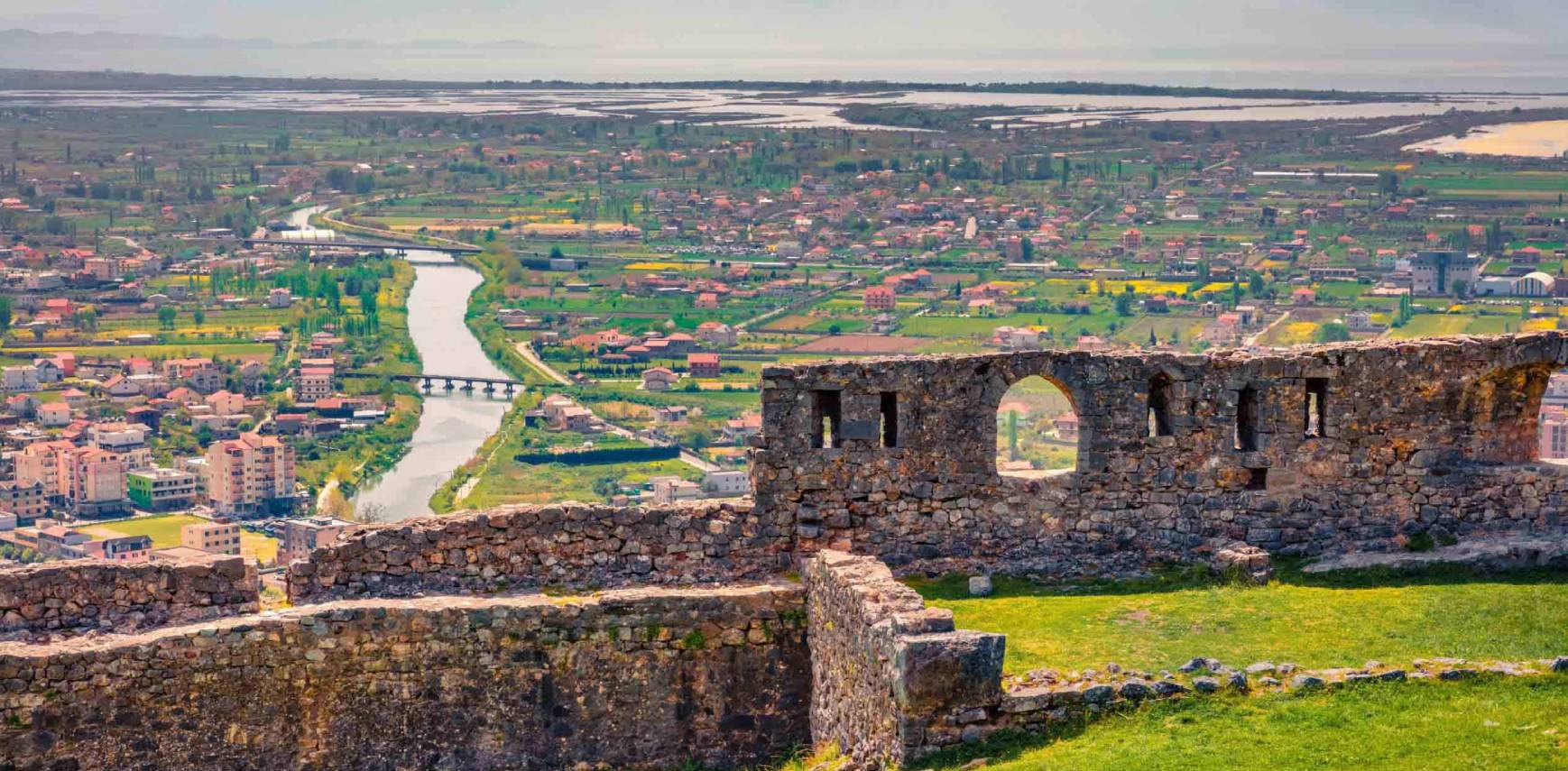
- Explore Albania
- BY MyAlbania Admin
- DATE 24/06/2023
Lezhë is a charming town that offers a unique blend of history, culture, and natural beauty. It is a place where the past and the present merge seamlessly, creating a unique and fascinating destination.
Lezhë has a rich and diverse history dating back to the Neolithic period. The town’s name is believed to be derived from the Illyrian word “Lissus,” meaning “place with water.” Its strategic location on the Adriatic coast and the intersection of several trade routes made it an important center for trade and commerce.
Lezhë is a town that is proud of its heritage and culture. It has a vibrant arts scene, with several galleries and museums showcasing the work of local artists and artisans. The town also hosts several cultural events throughout the year, including music festivals, theater performances, and art exhibitions.
The Skanderbeg Memorial and Lezhë Castle are two of the most iconic landmarks in Albania. The memorial is dedicated to George Kastrioti Skanderbeg, a national hero who fought against the Ottoman invasion in the 15th century. The castle, which dates back to the Byzantine period, served as Skanderbeg’s headquarters. You can explore the castle’s ruins and climb to the top for breathtaking views of the surrounding countryside.
Don’t miss the Church of St. Nicholas, a stunning Byzantine church located in the heart of Lezhë. The church dates back to the 13th century and boasts beautiful frescoes, icons, and decorations. Visitors can admire the intricate architecture and learn about the church’s role in the religious and cultural life of Lezhë.
The Lezhë Museum is a small but impressive museum showcasing the cultural and natural heritage of Lezhë and its surroundings. The museum features exhibits on archaeology, ethnography, art, and nature, as well as temporary exhibitions and events.
Lezhë is blessed with some of the most breathtaking natural scenery in Albania. From rugged mountains to lush forests, sparkling rivers to pristine beaches, there is no shortage of natural wonders to explore around Lezhë.
You can take a boat tour and admire the natural beauty of the Drin River delta and observe the wildlife.
The coastline near Lezhë features several sandy beaches, Shëngjin, Velipoje, that are ideal for swimming, sunbathing, and water sports. If you are looking for a more secluded beach, Rana e Hedhun Beach is the perfect choice. With its rugged coastline and crystal-clear waters, it is the perfect place to escape the crowds and enjoy some peace and quiet.
The Kune-Vain Lagoon, is another natural wonder in the Lezhë surroundings worth a visit. The lagoon is fed by several rivers and springs, and it is home to many birds, fish, and plants.
Do not leave the city without tasting the tr aditional cuisine of the Zadrima region. For further information: https:// visitlezha.al/
Get Updates & More
Thoughtful thoughts to your inbox

Tel : +355698113636 Email: [email protected] Address: Vlorë - Albania
- Vendor area
- P̲r̲i̲c̲i̲n̲g̲ ̲&̲ ̲O̲f̲f̲e̲r̲s̲
- Accommodation
- Itinerary And Tours
- ➩ About My Albania
- ➩ Getting here
- ➩ Albania entry rules
- ➩ Travel information and tips
- ➩ Event calendar
- ➩ Public transport
- ➩ Safety in Albania
- ➩ Welcome To Albania
- ➩ Traditions
- ➩ History Of Albania
- ➩ Towns And Cities
- ➩ Iconic Places
- ➩ Albania Map
- ➩ Religious Tourism
- ➩ Health Tourism
- ➩ Arts And Culture
- ➩ Family Fun
- ➩ Sun And Sea
- ➩ Mountain
- ➩ Adventure And Sports
- ➩ What to eat
- ➩ What to drink
- ➩ Agroturizem
- ➩ Family tourism
- ➩ Restaurants
- Click here to view full Sitemap
Copyright © 2023 by My Albania - Discover the difference | Developed By AMS.AL
Cookies | Privacy | Our Terms
Mirë se vini në My Albania ! Welcome to My Albania!
Nëse doni të vizitoni, zbuloni dhe përjetoni Shqipërinë dhe nuk dini nga të filloni, My Albania do të jetë udhërrëfyesi juaj në çdo hap! Le të jetë My Albania Shqipëria juaj.
Gjeni në My Albania të gjitha informacionet dhe këshillat thelbësore për të planifikuar një vizitë të paharrueshme në Shqipëri. Nga momenti i parë i hyrjes, lëvizjet në vend, gjetja e çdo tipi strehimi, gjetja e udhërrëfyesit tuaj lokal, përjetimi i traditave të pasura, kuzhinës, historisë dhe artit, informacioni praktik në faqet tona do t'ju ndihmojë të përfitoni sa më shumë nga çdo cast i kaluar në Shqipëri.
Nëse je: një udhërrëfyes shqiptar që ofron vizita dhe eksperienca, jep me qira një strehim, restorant apo agroturizëm, ofron ushqim dhe produkte tradicionale, dhe që kërkon një platformë miqësore për të promovuar shërbimet e tua, BASHKOJU My Albania , mbështete dhe bëhu pjesë e një historie suksesi shqiptar.
Le të ndajmë së bashku një buzëqeshje nga Shqipëria!
If you want to vist and experience Albania and don't know where to start, My Albania will be your guide every step of the way! Let My Albania be Your Albania. Let My Albania be Your Albania.
Get all the essential information and top tips to plan an unforgettable visit to Albania. From how to get here to getting around, finding any type of accomodation, finding your local guide, experiencing the rich traditions, cuisine, history and art, the practical information in our pages will help you get the most out of every minute in Albania.
If you are: a local guide offering tours and experiences, renting a property, a restaurant or agritourism offering traditional food and products, searching for your friendly platform to promote your services, JOIN My Albania, support and become part of an Albanian success story.
Let's share a smile from Albania together!
This website requires cookies to provide all of its features. By using our website, you agree to our use of cookies. More info!

Living Albania

A lessio –Lezhë (Albanian: Lezha or Lezhë,) is a town and municipality in northwest Albania , in the county with the same name. In ancient history it was an ancient Greek colony named Lissus. The latter is an Archaeological Park of Albania.
The city dates back to at least 8th century BC. Around 385 BC, a Greek colony was founded by Dionysius I of Syracuse by the name of Lissos, as part of a strategy by Dionysius to secure Syracusan trade routes along the Adriatic. Diodorus calls it a polis. The city was separated into sectors by diateichisma and there are elements of Syracusan architecture in part of its walls. At a later time it came under Illyrian rule. In 211 BC, Philip V of Macedon captured the citadel of Akrolissos , and Lissos surrendered to him. The town was later recovered by the Illyrians. It was in Lissos that Perseus of Macedon negotiated an alliance against Rome with the Illyrian king Gentius , and it was from Lissos that Gentius organized his army against the Romans . Lissos maintained a large degree of municipal autonomy under both Macedonian and Illyrian rule, as evidenced by the coins minted there. The city was of some importance in the Roman Civil War , being taken by Marc Antony and then remaining loyal to Caesar. In Roman times, the city was part of the province of Epirus Nova, its name Latinized as Lissus .From 2004 an excavation started around the ancient Acropolis of Lissos and the Skanderbeg Memorial , which revealed Hellenistic, Roman and Early Byzantine buildings, tombs and other findings. In Middle Ages Lissus (then known as Alessio) frequently changed masters until the Venetians took possession of it in 1386. It still belonged to them when Skanderbeg died, but In 1478 it fell into the hands of Turks during the siege of Shkodra, with the exception of a short period (1501–1506) when it returned to Venetian domination. Because it was under the Venetian control, it was chosen in 1444 by Gjergj Kastriot Skenderbeu as a neutral place for the convention of Albanian, Serbian, Dalmatian and other lords of the area aiming at organizing their common defence against the Turks.According to other historians, Lezhë is considered as the site of the League of Lezhë where Skanderbeg united the Albanian princes in the fight against the Ottoman Empire . Skanderbeg was buried in the cathedral of Lezhë which was dedicated to Saint Nicholas and later used as Selimie Mosque . Lezhë has also been known by the Italian form of its name, Alessio and in the 19th century as Alise, Lesch, Eschenderari, or Mrtav (Catholic Encyclopedia) . Today Lezhë is a growing city. Its proximity to the port of Shëngjin as well as its location on the national road between the Montenegrin border to the North and Tirana to the South makes it an attractive location for industry and business. Majority of the people from Lezhë descend from the Zadrima, Mirdita and Malësia/Malësi e madhe regions of northwestern Albania. The people from Zadrima and Mirdita are native to Lezhë and the surrounding area. Whilst the Malësor clans from Malësia, such as Kelmendi, Shkreli, Kastrati etc. , had settled Lezhë and surrounding areas around 100–300 years ago. In terms of religion, Lezha has a Catholic majority(70-80%) and a Muslim minority(30-20%).
Monuments and places of interest
livingalbania
Related posts.

KRUJA SKANDERBEG’S CITY

THE JEWS IN ALBANIA

SARANDE SOUTH ALBANIA PEARL
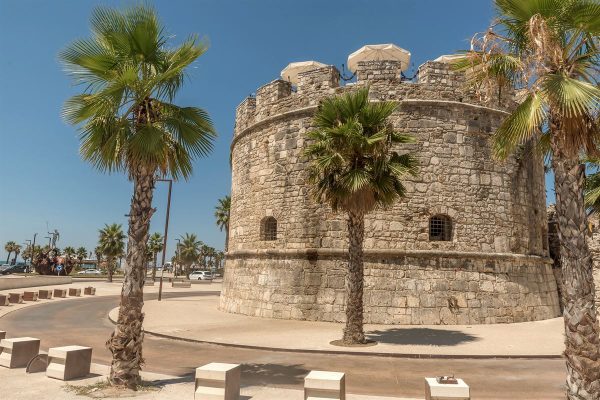
Lezhë District Travel Guide: All You Need To Know
Lezhë District is a district in the northwestern part of Albania, located in the Lezhë County. The district has a population of around 135,000 people and covers an area of approximately 1,606 square kilometers.
The district is home to several historic and cultural landmarks, including the Castle of Lezhë, the Memorial of Skanderbeg, and the Church of Shën Kolli. The district is also known for its natural beauty, with scenic landscapes, beaches, and the Albanian Alps.
The largest city in the district is Lezhë, which is also the administrative center. Other important towns in the district include Shëngjin, Kallmet, and Rubik.
The economy of the Lezhë District is primarily based on agriculture, with crops such as wheat, corn, and tobacco being grown in the region. The district is also home to several industries, including textile manufacturing, food processing, and tourism.
Overall, the Lezhë District is a beautiful and culturally rich destination that offers a range of attractions and activities for visitors to enjoy.
Places to Visit in Lezhë District Lezhë District in Albania is a beautiful and culturally rich destination with many attractions and activities for visitors to enjoy. Here are some of the top places to visit in Lezhë District:
Castle of Lezhë: This historic castle was built in the 4th century and was an important stronghold for the Illyrian and Byzantine empires. It is also the site of the famous battle between Skanderbeg and the Ottoman Empire in 1444.
Memorial of Skanderbeg: This national monument honors the Albanian hero Skanderbeg, who led a rebellion against the Ottoman Empire in the 15th century. The monument features a large statue of Skanderbeg on horseback and is surrounded by beautiful gardens.
Shëngjin Beach: This popular beach on the Adriatic Sea is known for its clear blue waters and sandy beaches. It is a great place to swim, sunbathe, and relax.
Valbona Valley National Park: This beautiful national park is located in the Albanian Alps and offers stunning mountain scenery, hiking trails, and opportunities for wildlife viewing.
Kallmet Wineries: Lezhë District is known for its wine production, and the Kallmet region is home to several wineries that offer tours and tastings.
Church of Shën Kolli: This historic church is located in the town of Shkrel and is known for its beautiful frescoes and icons.
Rubik Castle: This historic castle is located on a hilltop near the town of Rubik and offers stunning views of the surrounding countryside.
By visiting these attractions and more, you can experience the beauty and cultural richness of Lezhë District.
Best Time To Visit Lezhë District The best time to visit Lezhë District in Albania depends on your interests and preferences. The climate in Lezhë District is Mediterranean, with hot and dry summers and mild and wet winters.
The summer months from June to August are the most popular time to visit, as the weather is warm and sunny, and the beaches and outdoor activities are in full swing. However, this is also the peak tourist season, and prices may be higher, and crowds may be larger.
If you prefer cooler weather and fewer crowds, consider visiting Lezhë District in the spring or fall. The months of April to May and September to October offer pleasant temperatures, fewer tourists, and the opportunity to see the beautiful landscapes and nature in bloom.
Winter in Lezhë District is mild, with some rainfall, and temperatures averaging around 10°C. While the winter season is not the best time for outdoor activities, it can be a good time to visit if you want to experience the local culture and festivities, such as the Orthodox Christmas celebrations.
In summary, the best time to visit Lezhë District depends on your interests and preferences, but generally, the spring and fall seasons offer pleasant weather and fewer crowds, while the summer months offer warm temperatures and more outdoor activities.
Things to Do in Lezhë District Lezhë District in Albania offers a range of activities and attractions for visitors to enjoy. Here are some of the top things to do in Lezhë District:
Visit the Castle of Lezhë: Explore this historic castle that played an important role in the battle between Skanderbeg and the Ottoman Empire in 1444. The castle offers stunning views of the surrounding countryside.
Relax on Shëngjin Beach: Enjoy the beautiful sandy beaches and clear blue waters of this popular beach on the Adriatic Sea. It’s a great place to swim, sunbathe, and enjoy water sports.
Hike in Valbona Valley National Park: Take a hike in this beautiful national park located in the Albanian Alps. The park offers stunning mountain scenery, hiking trails, and opportunities for wildlife viewing.
Explore Kallmet Wineries: Lezhë District is known for its wine production, and the Kallmet region is home to several wineries that offer tours and tastings.
Visit the Memorial of Skanderbeg: Honor the Albanian hero Skanderbeg, who led a rebellion against the Ottoman Empire in the 15th century. The monument features a large statue of Skanderbeg on horseback and is surrounded by beautiful gardens.
Discover the Church of Shën Kolli: Visit this historic church in the town of Shkrel, known for its beautiful frescoes and icons.
Admire the Rubik Castle: Explore this historic castle located on a hilltop near the town of Rubik and enjoy the stunning views of the surrounding countryside.
Attend Festivals and Events: Experience the local culture and festivities, such as the Orthodox Christmas celebrations, and the Lezhë International Film Festival.
By experiencing these activities and more, you can enjoy the beauty and cultural richness of Lezhë District in Albania.
How to get around in Lezhë District Lezhë District is located in northern Albania and is known for its beautiful landscapes, rich history, and cultural heritage. If you’re looking to get around in Lezhë District, there are several options available to you:
By car: The easiest and most convenient way to get around in Lezhë District is by car. There are several car rental companies available in the area, and you can rent a car for a day, a week, or longer, depending on your needs.
By taxi: Taxis are readily available in Lezhë District, and they are an affordable and convenient way to get around. You can hail a taxi on the street or book one through a taxi app.
By bus: There are several bus routes that connect the different towns and villages in Lezhë District. This is a more affordable option compared to renting a car or taking a taxi, but the buses can be crowded and not always reliable.
By bicycle: Cycling is a great way to explore the beautiful countryside and coastal areas of Lezhë District. You can rent a bicycle from local rental shops or bring your own.
On foot: Walking is a great way to explore the historic towns and villages in Lezhë District. Many of the streets are narrow and pedestrian-friendly, so you can easily walk from one place to another.
No matter how you choose to get around in Lezhë District, make sure to take in the breathtaking scenery and immerse yourself in the local culture and history.
Where to eat in Lezhë District Lezhë District is known for its delicious cuisine, which combines Balkan, Mediterranean, and Ottoman influences. Here are some of the best places to eat in Lezhë District:
Piazza Restaurant: Located in the center of Lezhë town, Piazza Restaurant offers a range of traditional Albanian dishes, including grilled meat and fish, as well as international cuisine. The restaurant has a cozy atmosphere and friendly staff.
Restorant Zgara Korçare: This restaurant is located in the village of Kallmet and is known for its delicious grilled meat dishes. The menu includes lamb, beef, and chicken, as well as vegetarian options. The restaurant also offers a selection of local wines.
Balena Restaurant: Situated on the coast of Shëngjin, Balena Restaurant is a popular seafood restaurant that offers a variety of fresh fish and seafood dishes, including grilled octopus, squid, and shrimp.
Guri i Zi Restaurant: This restaurant is located in the town of Rubik and is known for its traditional Albanian cuisine. The menu includes dishes such as stuffed peppers, baked lamb, and homemade pastries.
Shpija e Gjyshit Restaurant: Located in the village of Kallmet, Shpija e Gjyshit (Grandma’s House) is a family-run restaurant that serves traditional Albanian dishes made with fresh, local ingredients. The atmosphere is cozy and welcoming, and the staff is friendly.
These are just a few of the many great places to eat in Lezhë District. Make sure to try some of the local specialties, such as fërgesë, a dish made with peppers, tomatoes, and cheese, and tavë kosi, a baked dish made with yogurt and lamb.
Famous street stalls in Lezhë District Street food is an important part of the culinary culture in Lezhë District, and there are several street stalls that are popular with locals and visitors alike. Here are some of the most famous street stalls in Lezhë District:
Qebaptore: Qebaptore is a popular street stall that serves qebap, a type of grilled meat sausage made from beef, lamb, or a combination of both. The qebap is served on a roll with onions and a spicy tomato sauce.
Pica Zogu: Pica Zogu is a small pizza stand that serves delicious thin-crust pizza with a variety of toppings, including cheese, ham, mushrooms, and peppers.
Bakllamaja: Bakllamaja is a street stall that serves bakllava, a sweet pastry made from layers of filo pastry filled with chopped nuts and sweetened with honey syrup.
Byrekçi Besniku: Byrekçi Besniku is a popular street stall that serves byrek, a savory pastry filled with cheese, spinach, or meat. The byrek is made fresh on-site and is served hot and crispy.
Shijaku Sweets: Shijaku Sweets is a street stall that serves a variety of traditional Albanian sweets, including halva, a sweet confection made from sesame seeds and sugar, and rahat, a soft, chewy candy made from sugar and fruit flavors.
These street stalls can be found in various locations throughout Lezhë District, and they offer a great opportunity to sample some of the local cuisine at an affordable price.
Where to stay in Lezhë District Luxury accommodation Lezhë District offers a range of luxury accommodation options for travelers who are looking for a comfortable and upscale stay. Here are some of the best luxury hotels in Lezhë District:
Hotel Mediteran: Hotel Mediteran is a five-star hotel located in the coastal town of Shëngjin. The hotel offers luxurious rooms and suites, as well as a spa, fitness center, outdoor pool, and several restaurants and bars.
Hotel Rozafa: Hotel Rozafa is a four-star hotel located in the heart of Lezhë town. The hotel offers stylish rooms and suites with modern amenities, as well as a restaurant, bar, and fitness center.
Marub Hotel: Marub Hotel is a five-star hotel located in the village of Marub, just outside of Lezhë town. The hotel offers luxurious rooms and suites with mountain views, as well as a spa, fitness center, outdoor pool, and two restaurants.
Hotel President: Hotel President is a four-star hotel located in the coastal town of Shëngjin. The hotel offers elegant rooms and suites with sea views, as well as a spa, fitness center, indoor pool, and several restaurants and bars.
Hotel Liss: Hotel Liss is a five-star hotel located in the town of Rubik, just outside of Lezhë town. The hotel offers spacious rooms and suites with mountain views, as well as a spa, fitness center, outdoor pool, and two restaurants.
These luxury hotels in Lezhë District offer top-notch amenities, excellent service, and a comfortable and relaxing atmosphere for travelers looking for a high-end experience.
Where to stay in Lezhë District Budget accommodation Lezhë District has several budget-friendly accommodation options for travelers who are looking for affordable and comfortable places to stay. Here are some of the best budget accommodation options in Lezhë District:
Hotel Fshati: Hotel Fshati is a budget-friendly hotel located in the village of Kallmet, just a short drive from Lezhë town. The hotel offers simple rooms with basic amenities, as well as a restaurant and bar.
Hotel Guri: Hotel Guri is a budget hotel located in the town of Rubik. The hotel offers clean and comfortable rooms with private bathrooms, as well as a restaurant and bar.
Guest House Vila Keti: Guest House Vila Keti is a budget guesthouse located in the coastal town of Shëngjin. The guesthouse offers simple rooms with shared bathrooms, as well as a communal kitchen and outdoor terrace.
Hotel Veliera: Hotel Veliera is a budget hotel located in the center of Shëngjin town. The hotel offers clean and comfortable rooms with private bathrooms, as well as a restaurant and bar.
Bora Guesthouse: Bora Guesthouse is a budget guesthouse located in the village of Ishull-Lezhë, just outside of Lezhë town. The guesthouse offers simple rooms with basic amenities, as well as a communal kitchen and outdoor terrace.
These budget accommodation options in Lezhë District offer affordable prices and comfortable accommodations for travelers who are looking to save money while still enjoying their stay in the region.
Travel Tips Lezhë District Here are some travel tips for visitors to Lezhë District:
Explore the historical sites: Lezhë District is rich in history and culture, and there are several historical sites that are worth visiting, such as the ancient city of Lissus, the Castle of Lezhë, and the Mosque of Sultan Mehmed Fatih.
Try the local cuisine: Albanian cuisine is delicious and unique, and there are several local dishes that are must-tries, such as qebap, byrek, and bakllava. Be sure to also try some of the local wines, which are excellent.
Visit the beaches: Lezhë District is home to several beautiful beaches, such as Shëngjin, Velipoja, and Tale. These beaches offer crystal-clear waters and sandy shores, and are perfect for swimming, sunbathing, and relaxing.
Dress appropriately: Albania is a conservative country, so it’s important to dress appropriately, especially when visiting religious sites. Women should cover their shoulders and wear long pants or skirts, and men should also dress conservatively.
Learn some Albanian phrases: While many people in Lezhë District speak some English, it’s always helpful to know some basic Albanian phrases, such as “mirëdita” (good day), “faleminderit” (thank you), and “ju lutem” (please).
Be mindful of the weather: Lezhë District has a Mediterranean climate, with hot summers and mild winters. It’s important to be mindful of the weather when planning your trip, and to bring appropriate clothing and sun protection.
By following these travel tips, visitors to Lezhë District can have a safe, enjoyable, and memorable trip.
You might also enjoy:
Jordan: a land of ancient wonders and natural beauty, cochabamba department travel guide: all you need to know, issyk-kul region travel guide: all you need to know, unmissable places to visit in nuwara eliya, leave a comment cancel reply.
Your email address will not be published. Required fields are marked *
Save my name, email, and website in this browser for the next time I comment.
Dielli | The Sun
Albanian American Newspaper Devoted to the Intellectual and Cultural Advancement of the Albanians in America | Since 1909
Lesh (Lezhë)
December 16, 2013 by dgreca
Rubrika e Diellit: Tingellime vendemrash Ilire/
Nga NELSON Ç ABEJ/
An ancient Illyrian city, known in antiquity as Lissos ( Λίσσο ς)/Lissus. Now Lesh and Lezhë (the latter form evolved for avoiding being confounded with the Albanian word lesh ‘wool’). It was founded as an ancient Illyrian settlement of Early Iron from 8 th century BC 1 . Three centuries later, in 385 BC, it became a Syracusan colony by Dionysios I 2,3 . Lissos came under the rule of the Illyrian kingdom of ardaiei with their capital city Scodra by the second half of the 3 rd century BC during the rule of Agron, Teuta and Gentius. After the Roman conquest of Illyria in the 2 nd century BC, Lissus became a Roman colony. Lissus is mentioned again by Stephanus of Byzantium in the 6 th century as an Illyrian city with a separate fortified site known as Acrolissus “πόλλίς Ίλυρίας, και Άκρόλισσος” 4 . By the end of the 14 th century it became a possession of the Republic of Venice. In 1467 there was convened the League of Lesh organized by the Alnbanian national hero Georges Castriotis – Scanderbey. In western late medieval sources the name appears mainly in the Italianized form Alessio. The very rare form of the city name, Eschenderari, may be related to the Persian form of hero’s name , Eskander/Iskander.
The name of the city, Lissus, may be derived from a PIE *legh- ‘to lie’ (Compare Proto-Germanic *lega- ‘lying flat, low’, Old Norse lagr , Swedish låg , Danish lav ‘low’ and English low), which reflects the geographic position of the city, almost at the sea level.
The shift of the short open -i- in the ancient name of the city Lissus, to -e- in the modern form Lesh/Lezhw, is normal for Albanian, as attested by Latin loanwords such as meshë from missa , letër from littera , shpesh from spissus , peshk from piscis , ipeshkv from episcopus , etc. 5
1. Lissus Excavation Report 2004, Karl Franzens Universität, Graz, Österreich. Available:
2. Polybius, Histories 8, 15. 16.
3. Diodorus Siculus, Library XV 13. 4-5.
4. Stephani Byzantii Ethnicorvm quae svpersvnt. A. Meineke (ed). Reimer, Berlin, 1849.
5. Çabej, E. (1958). Problemi i autoktonisë së shqiptartëvet në dritën e emravet të vëndeve. Buletin i Universitetit Stetëror të Tiranës , Seria Shk. shoq. 2, p. 54-62.
Privacy Overview
- More Networks
- Urë Vajgurore
- Porto Palermo Tunnel
- Porto Palermo Castle
- Ksamil Islands
- Ali Pasha Castle
- Kaninë Castle
- Lëkurësi Castle
- The Castle of Gjon Boçari
- Butrint National Park
- Karaburun-Sazan National Marine Park
- Karaburun Peninsula
- Dhermi beach
- Albania Streaming Online
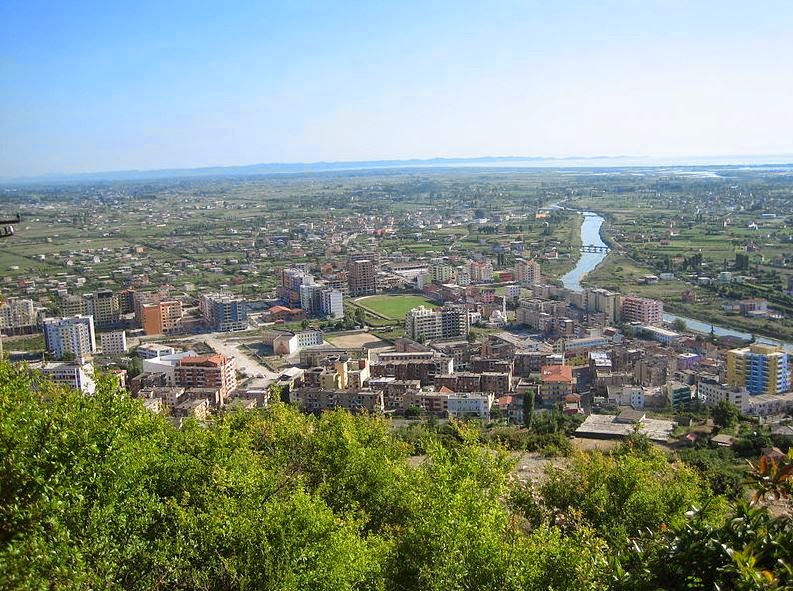
Search hotels in Lezhë
Enter your dates to see the latest prices and deals for lezhë hotels, star rating, review score.

Rambuje Resort
Situated in Lezhë, 43 km from Rozafa Castle Shkodra, Rambuje Resort features accommodation with a seasonal outdoor swimming pool, free private parking, a garden and a shared lounge.

Hotel Siklad
In the center of the city of Lezhe, Siklad Hotel offers accommodations with free WiFi and free parking. All rooms are fitted with a flat-screen TV. Rooms are equipped with a private bathroom.
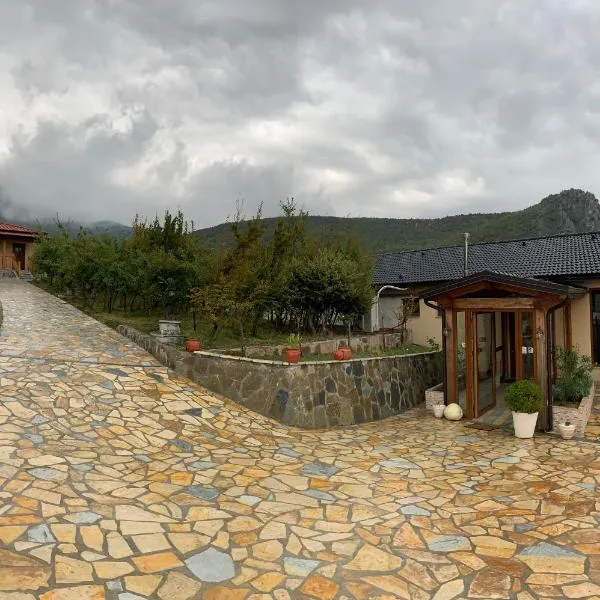
Hani i Leks Agroturizem
Set in Lezhë, 32 km from Rozafa Castle Shkodra, Hani i Leks Agroturizem offers accommodation with a garden, free private parking, a terrace and a restaurant.

Hotel Ambasador
Located in Lezhë, 37 km from Rozafa Castle Shkodra, Hotel Ambasador provides accommodation with a garden, free private parking, a restaurant and a bar.
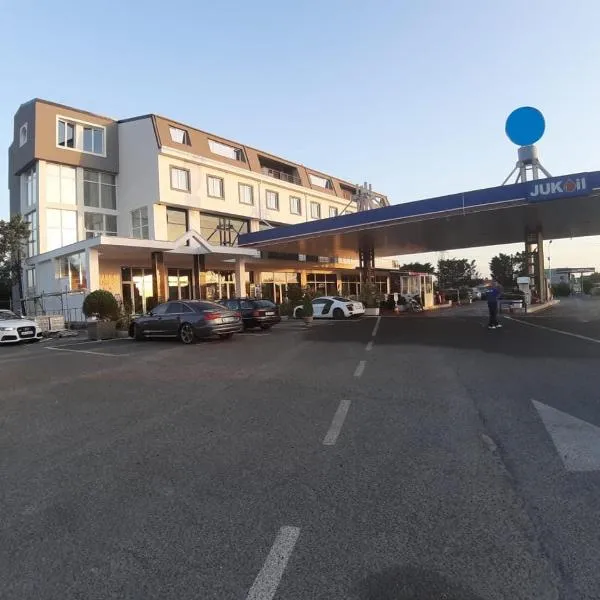
Hotel LISS 2
Situated in Lezhë, 37 km from Rozafa Castle Shkodra, Hotel LISS 2 features accommodation with a restaurant, free private parking and a bar.

Jolly Hotel
Jolly Hotel features a fitness centre, garden, a shared lounge and terrace in Lezhë.

PARADISE Laguna Vain
Situated in Lezhë, 43 km from Rozafa Castle Shkodra, PARADISE Laguna Vain features accommodation with an outdoor swimming pool, free private parking, a garden and a shared lounge.
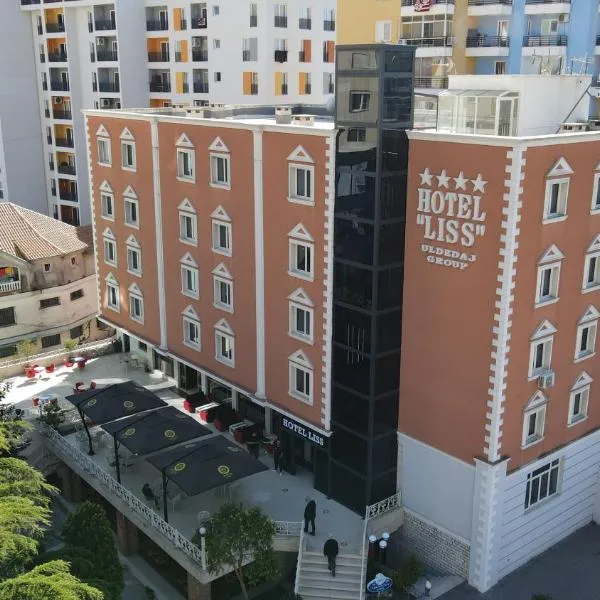
Centrally located in Lezhë, Hotel Liss has its own restaurant serving traditional Albanian dishes, while the rooms are air conditioned and equipped with satellite TV.
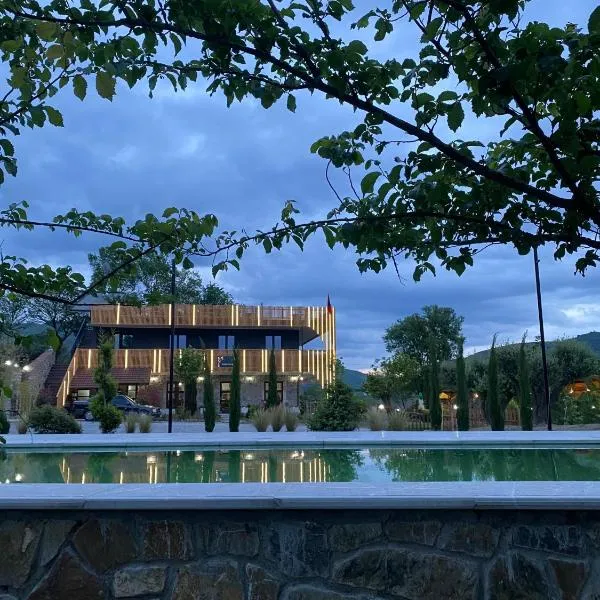
Hotel Restaurant Natyra e Qetë
Located in Lezhë, 35 km from Rozafa Castle Shkodra, Hotel Restaurant Natyra e Qetë provides accommodation with a seasonal outdoor swimming pool, free private parking, a garden and a terrace.

Hotel MARIO
Hotel MARIO is a 3-star property located in Lezhë, facing the beach. The property is around a few steps from Shëngjin Beach, 100 metres from Ylberi Beach and 42 km from Rozafa Castle Shkodra.
Most booked hotels in Lezhë in the past month

Popular with guests booking hotels in Lezhë
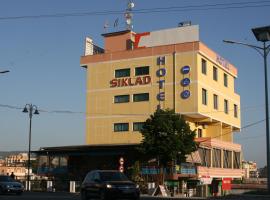
Evergreen Laguna Vain-Lezhe
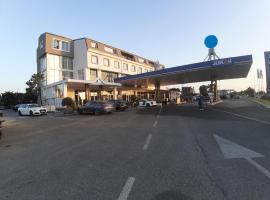
Budget hotels in Lezhë

Hotell oli suurepärane oma puhtuse, mugavuse ja asukoha poolest.
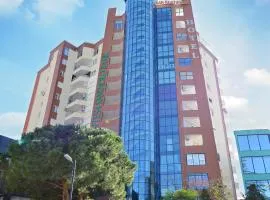
de buitengewoon vriendelijke mensen. grote kamer met balkon en uitzicht.

Situated in Lezhë, 41 km from Rozafa Castle Shkodra, Evergreen Laguna Vain-Lezhe features accommodation with a garden, free private parking, a terrace and a restaurant.

Hotel Infinity
Situated in Lezhë, 80 metres from Ylberi Beach, Hotel Infinity features accommodation with free WiFi and free private parking. The property is non-smoking and is set 500 metres from Shëngjin Beach.
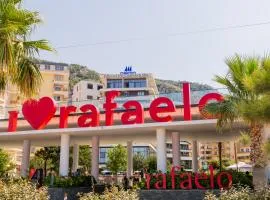
Rafaelo Comfort & Family
Located in Lezhë, 800 metres from Laguna Park Beach, Rafaelo Comfort & Family provides accommodation with a seasonal outdoor swimming pool, free private parking, a garden and a terrace.
The size of the room The isolation The complex of buildings around the pool The balcony
FAQs about hotels in Lezhë
Which hotels in lezhë are good for families, what are the best hotels to stay in lezhë, what hotels in lezhë offer an especially good breakfast, what hotels in lezhë are good for couples, what hotels in lezhë have nice views.
Prices drop the moment you sign up!
What guests said about Lezhë:
Lezhe is ok..
Rana E Hedun beach is located away from the Shengjin main...
Great place for the money you pay and it would have been...
Very nice place, worth visiting.
I have been at Lezhe, working at a Paper plant for 10 years...

This was an incredible place to stay over the weekend;...
Research, refine and make plans for your whole trip

List your property
- Mobile version
- Your account
- Make changes to your booking online
- Customer Service help
- Booking.com for Business
- Places of interest
- Guest Houses
- Unique places to stay
- Discover monthly stays
- Unpacked: Travel articles
- Seasonal and holiday deals
- Traveller Review Awards
- Flight finder
- Restaurant reservations
- Booking.com for Travel Agents
- Coronavirus (COVID-19) FAQs
- About Booking.com
- Partner help
- Sustainability
- Press centre
- Safety resource centre
- Investor relations
- Terms & Conditions
- Partner dispute
- How we work
- Privacy & Cookie Statement
- Cookie Settings Manage cookie settings
- MSA Statement
- Corporate contact
- Content guidelines and reporting
Booking.com is part of Booking Holdings Inc., the world leader in online travel and related services.
Verified reviews from real guests.
We have more than 70 million property reviews, and they're all from real, verified guests .
How does it work?
It starts with a booking.
The only way to leave a review is to first make a booking. That's how we know our reviews come from real guests who have stayed at the property.
Followed by a trip
When guests stay at the property they check out how quiet the room is, how friendly the staff are and more.
And finally, a review
After their trip, guests tell us about their stay. We check for naughty words and verify the authenticity of all guest reviews before adding them to our site.
If you booked through us and want to leave a review, please sign in first.
Check-in date
Check-out date
Save big in Lezhë
Get exclusive access to member-only deals by email.
For a limited time only
Error: Please enter a valid email address
Error: Sorry. An error has occurred.
Hooray, you're now subscribed!

- Approximately 52 km from Tirana Airport to Lezhe
- 2019 Brand New Taxis
Description
Lezhë is a town and municipality in northwest Albania, in the county with the same name.
One of the main strongholds of the Labeates, the earliest of the fortification walls of the city seems to date to the late 4th century BC and to be of native Illyrian construction. On the same site, an ancient Greek colony named Lissos was founded by Dionysius I of Syracuse. The city was later alternatively under Illyrian, Macedonian and Roman rule.
The present municipality was formed at the 2015 local government reform by the merger of the former municipalities Balldren, Blinisht, Dajç, Kallmet, Kolsh, Lezhë, Shëngjin, Shënkoll, Ungrej and Zejmen, that became municipal units. The seat of the municipality is the town Lezhë. The total population is 65,633 (2011 census), in a total area of 514.97 square kilometers (199 square miles). The population of the former municipality at the 2011 census was 15,510.
The city dates back to at least 8th century BC. Around 385 BC, Dionysius I of Syracuse founded a Greek colony by the name of Lissos (Λισσός), on a site already occupied by Illyrian settlers, as part of a strategy by Dionysius to secure Syracusan trade routes along the Adriatic. Diodorus calls it a polis. The city was separated into sectors by diateichisma (Greek: διατείχισμα , “cross-wall” ) and there are elements of Syracusan architecture in part of its walls. At a later time it came under Illyrian rule. In 211 BC, Philip V of Macedon captured the citadel of Akrolissos, and Lissos surrendered to him. The town was later recovered by the Illyrians. It was in Lissos that Perseus of Macedon negotiated an alliance against Rome with the Illyrian king Gentius, and it was from Lissos that Gentius organized his army against the Romans. Lissos maintained a large degree of municipal autonomy under both Macedonian and Illyrian rule, as evidenced by the coins minted there. [9] The city was of some importance in the Roman Civil War, being taken by Marc Antony and then remaining loyal to Caesar. In Roman times, the city was part of the province of Epirus Nova, its name Latinized as Lissus .
From 2004 an excavation started around the ancient Acropolis of Lissos and the Skanderbeg Memorial, which revealed Hellenistic, Roman and Early Byzantine buildings, tombs and other findings.
In Middle Ages Lissus (then known as Alessio) frequently changed masters until the Venetians took possession of it in 1386. It still belonged to them when Skanderbeg died, but In 1478 it fell into the hands of Turks during the siege of Shkodra, with the exception of a short period (1501–1506) when it returned to Venetian domination. Because it was under the Venetian control, it was chosen in 1444 by George Castrioti (Skanderbeg) as a neutral place for the convention of Albanian, Serbian, Dalmatian and other lords of the area aiming at organizing their common defence against the Turks. [17]
According to other historians, Lezhë is considered as the site of the League of Lezhë where Skanderbeg united the Albanian princes in the fight against the Ottoman Empire.
Skanderbeg was buried in the cathedral of Lezhë which was dedicated to Saint Nicholas and later used as Selimie Mosque.
Lezhë has also been known by the Italian form of its name, Alessio and in the 19th century as Alise, Lesch, Eschenderari, or Mrtav (Catholic Encyclopedia).
Today Lezhë is a growing city. Its proximity to the port of Shëngjin as well as its location on the national road between the Montenegrin border to the North and Tirana to the South makes it an attractive location for industry and business.
Majority of the people from Lezhë descend from the Zadrima, Mirdita and Malësia/Malësi e madhe regions of northwestern Albania. The people from Zadrima and Mirdita are native to Lezhë and the surrounding area. Whilst the Malësor clans from Malësia, such as Kelmendi, Shkreli, Kastrati etc., had settled Lezhë and surrounding areas around 100–300 years ago. In terms of religion, Lezha has a Catholic majority(70-80%) and a Muslim minority(30-20%)

All rights reserved © 2019 | AUTO HOLIDAY ALBANIA
If you are going to visit Albania, we can help you to start your visit stress-free.
We are authorized from TIA and we deliver transportation for groups and individuals, holidays and business, from Tirana International Airport (TIA) to every city in Albania, with a large fleet of brand new, budget and premium vehicles. Our prices are “all inclusive” and fixed, for a total comfort and hassle-free arrival to Albania.
Book online your trip, using our website with an online safe payment. We will be waiting for you at the arrival taking you to your destination fast and stress-free.
- Address: Tirana International Airport
- Phone: +355 69 9999 300
- Email: [email protected]

IMAGES
COMMENTS
Lissus Travel, Lezha, Lezhë, Albania. 9,890 likes · 11 were here. Lissus Travel Agjencia juaj e udhetimit! Phone Contact : +355 697110940 E-mail:...
Lezhë has a rich and diverse history dating back to the Neolithic period. The town's name is believed to be derived from the Illyrian word "Lissus," which means "place with water.". The Illyrians were the dominant ethnic group in the Balkans before the Roman conquest in the 2nd century BC.
Lissus was an important city and military base of the Illyrians. It provided important and convinient access into the Adriatic Sea and inlands. ... Visit Lezhe Albania July 31, 2022, 21:48 Lezha is a beautiful city! You should visit Lezha. Great article! Reply. Bekim January 23, 2023, 23:36 ... Travel (40) Most popular articles.
7. Bird watching in the lagoons of Kune-Vain. These two lagoons lie between the city of Lezha and the Adriatic Sea, on both sides of the Drini estuary. Three watchtowers have been built for visitors, one in Kune and two in the Vain area. They serve to explore the area as well as to observe the numerous birds.
Lissus Travel, Lezha, Lezhë, Albania. 9,887 likes · 11 were here. Lissus Travel Agjencia juaj e udhetimit! Phone Contact : +355 697110940 E-mail: Lissus.travel@hot
A visit to Lissus, a walled Illyrian city. October 23, 2020. For many the city of Lezhë is mainly associated with the Albanian national hero, Gjergj Kastrioti, known as Skanderbeg, who famously formed the League of Lezhë in the city in 1444, an alliance of lords who came together to rise up against the Ottoman occupation and which led to ...
Lezhë (Albanian: [ˈlɛˈʒə], Albanian definite form: Lezha) is a city in the Republic of Albania and seat of Lezhë County and Lezhë Municipality. It is one of Albania's continuously inhabited cities, with roughly 2,400 years of recorded history.. One of the main strongholds of the Labeatai, the earliest of the fortification walls of Lezhë are of typical Illyrian construction and are ...
Then, it became a Roman camp - Lissus. The Venetians called the city Alessio, while the Serbs and Turks referred to it as Lesh. By the way, Italians still call the city Alessio today. ... Durres, Shkoder, the airport, coordinates 41.34434, 19.77683). Ticket prices start from 250 leks. Buses and minibusses travel to both Shkoder and the cities ...
Lissus travel is located in Lezhë. Lissus travel is working in Travel agencies activities. You can contact the company at 069 711 0940. You can find more information about Lissus travel at lissus-travel.business.site. You can contact the company by email at
Natyra e qete is a meat restaurant, also in this restaurant you can find various traditional Albanian food. ( updated May 2023 | edit) 41.66169 19.67258. 2 Arberia Palace, Autostrada Lezhe - Tirane, SH1, Fushe Milot, ☏ +355 682058904, [email protected]. 08:00-23:00. ( updated May 2023 | edit) 41.775731 19.648697.
The construction of Lissus' walls, in the 4th century B.C. is attributed to Dionysius, the tyrant of Syracuse. The last restoration dates back to 1521, at the time of the Sultan Suleiman Selim Bayezid Han, after the castle was burned by Lezha's own citizens as a counterattack against the Ottomans.
The construction of Lissus' walls, in the 4th century B.C. is attributed to Dionysius, the tyrant of Syracuse. The last restoration dates back to 1521, at the time of the Sultan Suleiman Selim Bayezid Han, after the castle was burned by Lezha's own citizens as a counterattack against the Ottomans.
The city of Lezha is located 47 kilometers south of Shkodra. It is one of Albania's ancient cities, and in historical documents, it is mostly referred to by the name Lissus.
Explore Lezhë (Lezha) Lezhë is a charming town that offers a unique blend of history, culture, and natural beauty. It is a place where the past and the present merge seamlessly, creating a unique and fascinating destination. Lezhë has a rich and diverse history dating back to the Neolithic period. The town's name is believed to be derived ...
In Middle Ages Lissus (then known as Alessio) frequently changed masters until the Venetians took possession of it in 1386. It still belonged to them when Skanderbeg died, but In 1478 it fell into the hands of Turks during the siege of Shkodra, with the exception of a short period (1501-1506) when it returned to Venetian domination.
Lezhë. Lezhe /Lissus, Alb. Lesh, italian Alessio/ is a small city in the northwest of Albania on the left bank of the Drim River, some 9 km before its delta to the Adriatic sea, where there meet the fertile fields of Zadrima, Torovica and Mat's shore. The secrets of Lissus as the Lezha fortified stronghold was known in Antiquity, rise over ...
Lezhë District is a district in the northwestern part of Albania, located in the Lezhë County. The district has a population of around 135,000 people and covers an area of approximately 1,606 square kilometers. The district is home to several historic and cultural landmarks, including the Castle of Lezhë, the Memorial of Skanderbeg, and the …
map to travel: Lezhë. lezha.gov.al ... Lissus; Dutch: Ljes; ... Lezhe Coffeehouse in Lezhë, Albania. In the Area. Lezhë is situated close to the hamlets Kodra Marlekaj (Ishull-Shëngjin) and Lagjja e Re (Ishull-Shëngjin).
The name of the city, Lissus, may be derived from a PIE *legh-'to lie' (Compare Proto-Germanic *lega-'lying flat, low', Old Norse lagr, Swedish låg, Danish lav 'low' and English low), which reflects the geographic position of the city, almost at the sea level.. The shift of the short open -i-in the ancient name of the city Lissus, to -e-in the modern form Lesh/Lezhw, is normal for ...
In Middle Ages Lissus (then known as Alessio) frequently changed masters until the Venetians took possession of it in 1386. It still belonged to them when Skanderbeg died, but In 1478 it fell into the hands of Turks during the siege of Shkodra, with the exception of a short period (1501-1506) when it returned to Venetian domination. ...
Camping Lissus is a campsite in Shëngjin, Lezhë located on Rruga Lezhe-Shenkoll. Camping Lissus is situated nearby to the village Ishull Lezh ... Overview: Map: Directions: Satellite: Photo Map: Tap on the map to travel: Camping Lissus. Notable Places in the Area. Church of Saint Nicholas, Lezhë ...
Hani i Leks Agroturizem. Hotel in Lezhë. Set in Lezhë, 32 km from Rozafa Castle Shkodra, Hani i Leks Agroturizem offers accommodation with a garden, free private parking, a terrace and a restaurant. Show more. 9.6. Exceptional. 108 reviews. Price from £38.48 per night. Check availability.
Approximately 52 km from Tirana Airport to Lezhe; 2019 Brand New Taxis ... In Middle Ages Lissus (then known as Alessio) frequently changed masters until the Venetians took possession of it in 1386. It still belonged to them when Skanderbeg died, but In 1478 it fell into the hands of Turks during the siege of Shkodra, with the exception of a ...